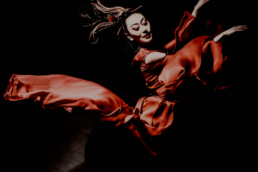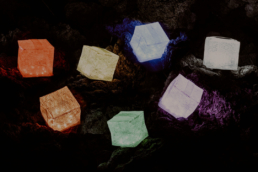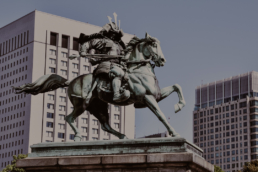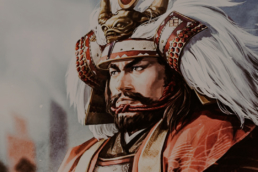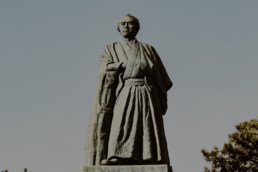MANAKA, il matrimonio tra tradizione e modernità.
Sentirsi addosso la tradizione e viverla nei giorni nostri, questo è MANAKA. Un marchio che utilizza tecnologie tradizionali per i giorni d’oggi, in modo che anche i posteri possano avere l’onore di vivere la storia del Giappone.


Ora che il mondo corre velocemente e tutto è una fusione di varie culture, MANAKA vuole preservare e far vivere il vero gusto giapponese e farlo indossare a chi il Giappone lo ama davvero. Ogni vestito ha un’anima, l’anima dei designer e degli artigiani giapponesi. Un’anima che vuole mostrarsi e parlare oggi raccontando quello che il Giappone è sempre stato, quello che è e quello che sarà. Ogni opera non è statica, ma ha una vita, un movimento. MANAKA è l’arte in movimento. Tutto ciò che, per importanza dovrebbe essere urlato, ma viene raccontato con un’eleganza ed un’educazione tutta giapponese, un desiderio che parte dal Produttore Yukiko Yamanaka.
Arte in movimento
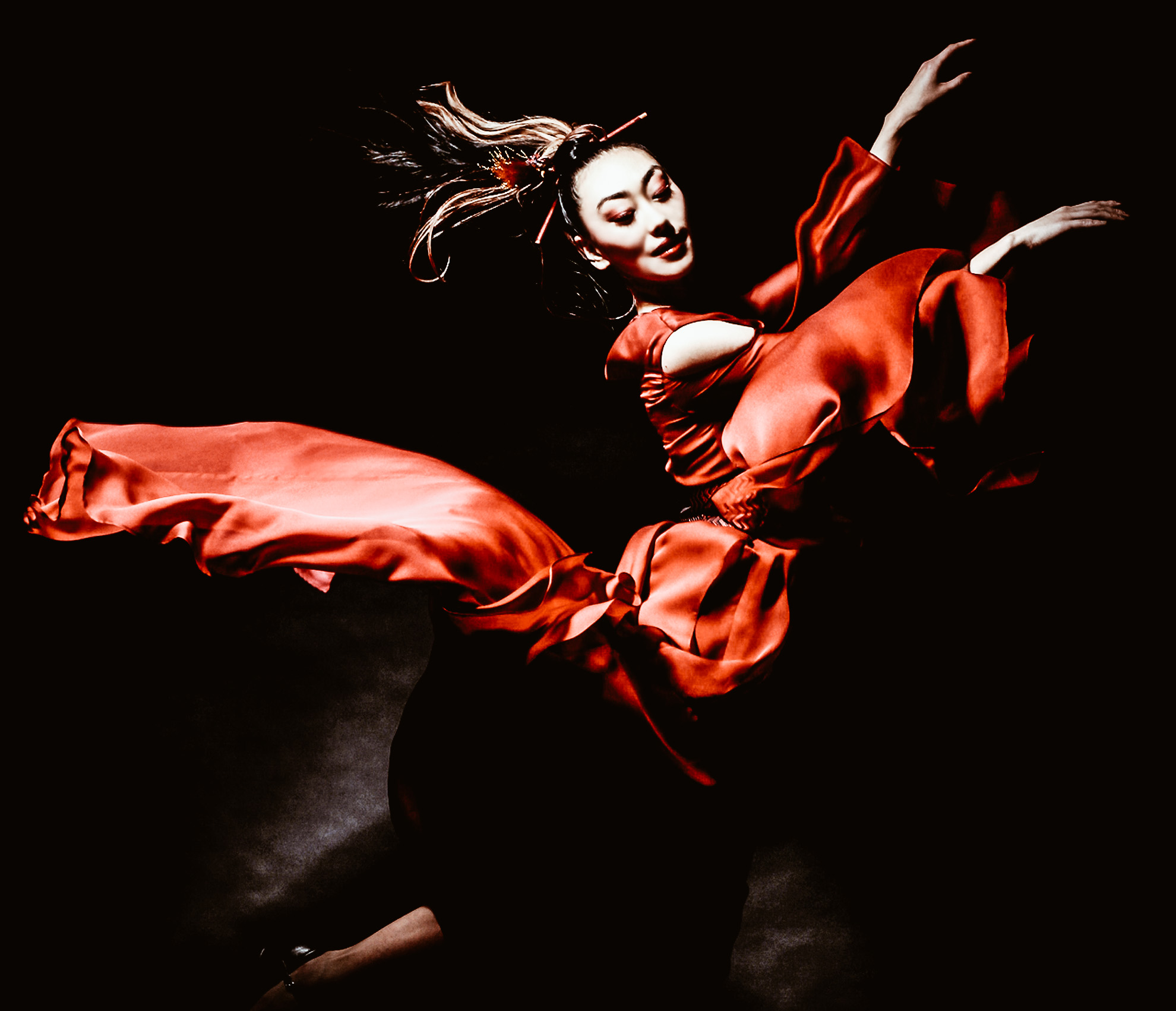
MANAKA è un nome che ora possiamo vedere in tutto il mondo. Dalle mostre al Triennale Art Museum italiano, da Taiwan e Singapore fino ad arrivare agli Eventi diplomatici dell'80° anniversario in Paraguay, in Sud America e manifestazioni a Hong Kong TEDX. MANAKA è anche indossato dalle finaliste di Miss Universo Giappone e World Supermodel. Infatti, questi abiti sottolineano non solo la loro bellezza ma regalano un’atmosfera e una particolarità che difficilmente altri marchi possono dare. Anche i media non sono rimasti indifferenti. MANAKA è infatti apparso in media dai grandi nomi tra cui Toyo Economic online, Tokyo Business Today, "DiGJAPAN!" di Shobunsha e TOKYO FRONT LINE, questi sono solamente alcuni esempi.
MANAKA al Salone del mobile 2020
Dopo aver ricevuto l’ambitissimo premio al World Supermodel Production 2019, potremo assistere alla presentazione del nuovo abito Kimono Phoenix MANAKA proprio al Salone del Mobile 2020 a Milano! Un’occasione da non perdere, non solo perchè si potrà ammirare la meraviglia dei tessuti dei kimono originariamente tinti nel laboratorio Kobayashi Somekoubou della cittadina di Tango, a Kyoto ma anche un abito che rappresenta perfettamente il Giappone e la sua tradizione. Non potete perdere questa occasione, godetevi la visione di questo abito kimono MANAKA al Salone del Mobile 2020!
Collaborazione tra MANAKA e KOBAYASHI SOMEKOUBOU
Tessuto ma anche tintura. L’abito Kimono Phoenix MANAKA è speciale per vari motivi. Andiamo più nel particolare.
La seta come tessuto è importantissima, ma MANAKA ha voluto rendere l’abito Kimono Phoenix ancora più speciale ed unico! Per questo motivo ha iniziato una collaborazione con un laboratorio a Tango (Kyoto), famoso proprio per i tessuti e per l’abilità nella tintura della seta sviluppata in bel oltre 35 anni di esperienza. Il tutto crea il "Tango-Chirimen" e il tessuto originale degli abiti MANAKA viene trattato con il "Tango Blue" tinto dalla mano di Tomohisa Kobayashi. Proprio grazie a questa collaborazione, MANAKA ha deciso di produrre abiti kimono e kimono-poncho.



Si tratta probabilmente del primo tessuto "Tango Blue" nel settore dei kimono e questa è la prima volta che suddetto tessuto viene utilizzato per un vestito. Come dicevamo all’inizio, tradizione e modernità insieme.
Il "Tango Blue" è l’infinito e unico colore dell’oceano di Tango, a nord di Kyoto, una tinta con un livello di robustezza superiore a 4 che però può essere trasparente, intenso e brillante. Frutto di un grande studio e dell’esperienza dello studio Kobayashi Somekoubou.
I vestiti MANAKA in dettaglio


Monochrome Phoenix Dress, World Supermodel Japan
Model / YUIKO Photographer / Chiaki Oshima
Phoenix Dress la fenice che danza
Sempre sinonimo di libertà e movimento, ecco un’altra opera d’arte tutt’altro che statica, ma viva. Una Fenice che danza elegantemente nella tradizione giapponese, con decori che ricordano le piume della Fenice messe insieme nel tessuto del Kimono. La fenice è il simbolo della rinascita e chi meglio di lei può incarnare la tradizione che torna in vita sotto una nuova forma? Questo è uno dei sentimenti con cui MANAKA veste le donne, rendendole uniche ed eleganti.
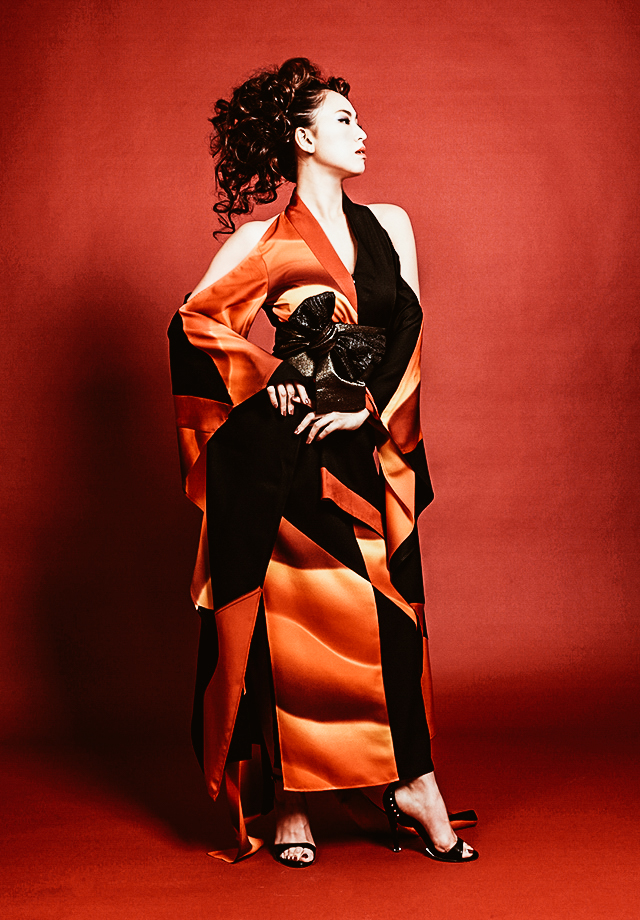
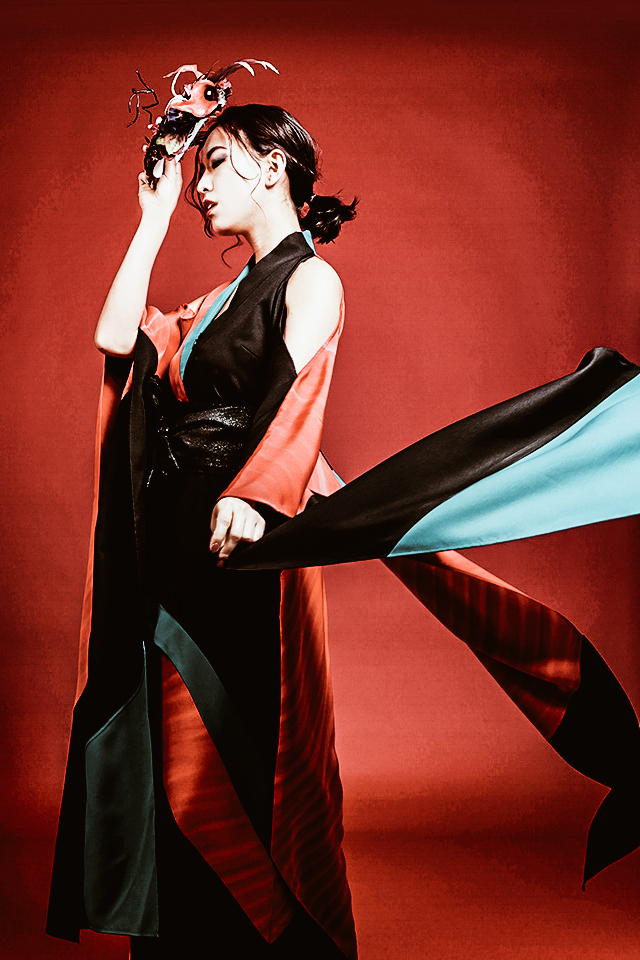
Phoenix Dress rossa e nera
Modella / Hiro Nishiuchi - Photographer / Chiaki Oshima
Goldfish dress, pesci rossi che nuotano
Un’opera d’arte in movimento, che nasce dal sentimento del voler fare indossare la tradizione con una forma nuova. Gli elementi del kimono vengono decomposti e ricomposti in un design completamente nuovo. Quando indossato, si muove armonicamente, è qualcosa che puoi sentire vivo e che rende chi lo indossa ancora più bella. Il corpo della donna e le sue curve vengono rispettate e non solo! Anche esaltate in un vortice di delicati movimenti che trasmettono la prorompenza della storia del Giappone. Non potete rimanere inosservate con un abito del genere, vi renderà sicuramente regali e riconoscibili in qualsiasi situazione.
Infatti, potete vedere già dalla foto, il movimento che le eleganti pieghe fanno addosso al corpo della donna. Tutto parla di tradizione rivisitata, di storia nel nostro tempo che ora abbiamo la fortuna di indossare. Questo abito è stato pensato e vissuto in modo che la donna potesse camminare come un pesce rosso che muove le sue delicate ed eleganti pinne in un fiume accarezzato dal vento.
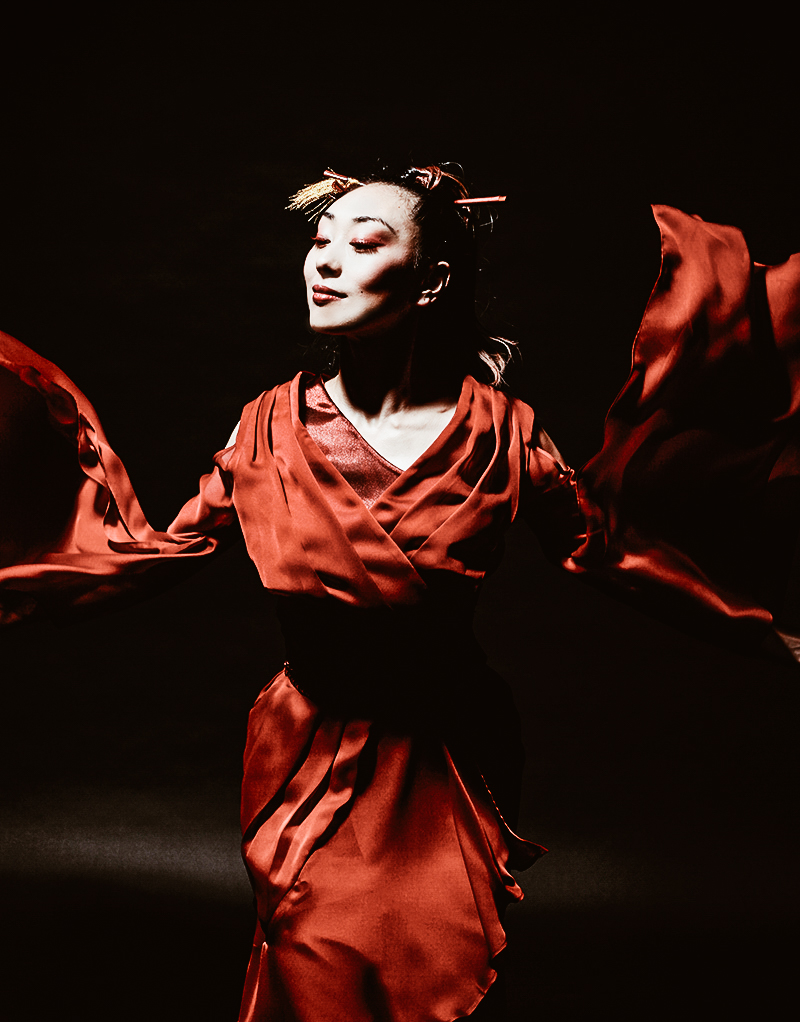
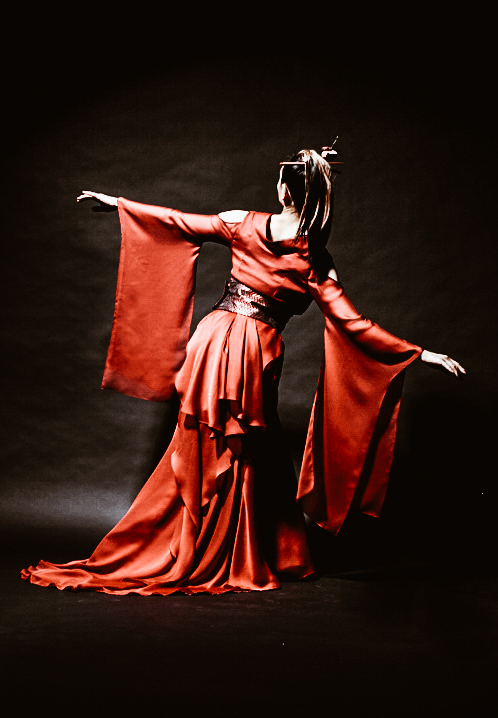
Goldfish dress
Modella / Mayuko Sakurano - Photographer / Chiaki Oshima
Kimono Poncho
Questo Poncho, che è un Kimono rinato a nuova vita, è un mix tra eleganza, tradizione e sensualità. Indossandolo non ci si può che sentire speciali e osservate. Guardate i movimenti del tessuto e provateli addosso, vi fascerà con rispetto ed eleganza regalandovi la sensazione di vivere nella storia.
HEEL GETA Flower e HEEL GETA Kimono Haikara
Un outfit non è completo senza le giuste scarpe. Bisogna vivere la tradizione rivisitata completamente, quindi MANAKA ha pensato anche ai famosi zoccoli di legno giapponesi, ovviamente rivisitati nella modernità. Heel GETA Kimono Haikara Heel getas sono perfettamente creati con il tessuto del kimono, pura seta e piume vintage.
I tacchi sono fatti a mano dagli artigiani MANAKA uno alla volta. Tutto questo grande lavoro e profondo sentimento per dare una silhouette morbida e femminile. Queste calzature sono create non solo per essere spettacolari, ma anche per essere comode e facilmente adattabili al piede. Delle speciali infradito che afferrano il collo del piede perfettamente, camminandoci ci si dimenticherà addirittura che sono scarpe con il tacco. Le Geta sono progettate per essere eleganti e far sentire a proprio agio chi le indossa. E’ un elegante comfort da indossare, degna firma di un outfit giapponese e ancora vivo nei cuori non solo dei nostalgici, ma anche di chi ama la modernità.
MANAKA vuole stuzzicare il vostro interesse alla cultura e alla tradizione del Kimono, vuole darvi un abito che possa essere indossato facilmente e magnificamente senza la difficoltà che poteva esistere una volta.
Armonia, tradizione, eleganza, movimento, vita. Ecco cosa muove le corde di MANAKA! Volete assistere al ritorno della tradizione? Vederla prendere nuova vita? Non perdete questa occasione, MANAKA vi aspetta al Salone del Mobile 2020 a Milano con i suoi abiti unici, il tessuto Tango Chirimen ed il Tango Blue! Potete anche trovare gli articoli MANAKA a TENOHA & | SHOP, il Giappone e la tradizione giapponese sono qui!
CARRY THE SUN by Landport
Fin da quando siamo bambini desideriamo portarci dietro il sole, CARRY THE SUN, appunto. Il nome dice tutto, di notte, di giorno, quando ci sentiamo insicuri, quando abbiamo paura e quando abbiamo bisogno di una rassicurazione. Un sogno che dal Giappone diventa una realtà e grazie a Landport, in qualsiasi occasione, possiamo portare comodamente in tasca o in borsa il sole e la sua luce.
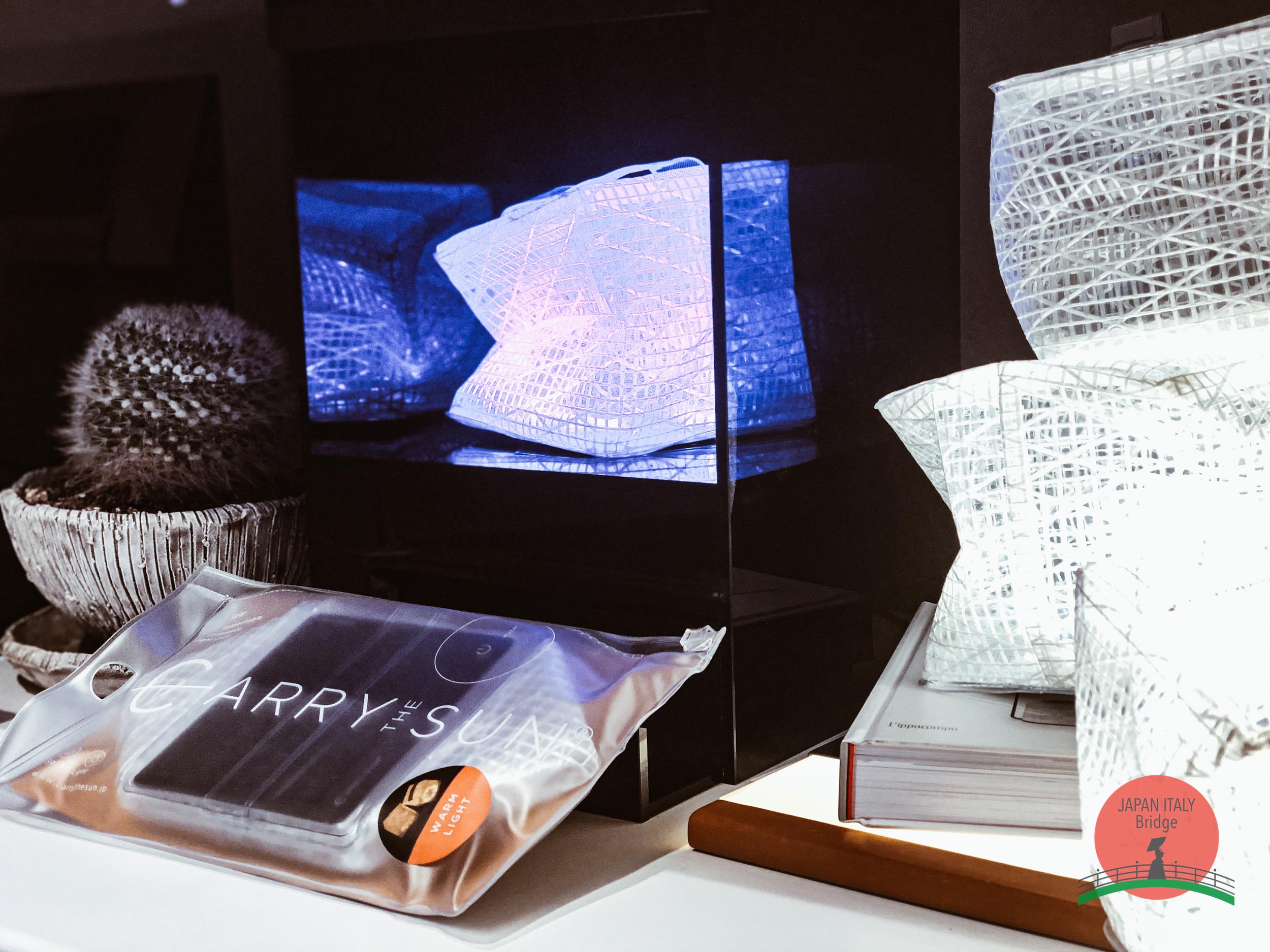
I modelli sono vari e si adattano a qualsiasi gusto ed occasione:
- A) luce calda dimensione S e M
- B) luce fredda dimensione S e M
- C) luce rainbow 7 colori (dimensione M)
CARRY THE SUN ovunque, in tenda, in vacanza, per emergenza o semplicemente come idea regalo.
Infatti, questo è un prodotto assolutamente ECO in tutti i suoi significati, perchè CARRY THE SUN è ECOlogico, ECOnomico ed ECOsostenibile. Un grandissimo risparmio di energia: basta ricaricarlo con la luce del sole diretta per almeno 8 ore e avrete il vero e proprio sole con voi per ben 74 ore! Inoltre, il suo essere leggero, resistente e lavabile renderà il tutto ancora più piacevole, diventerà una presenza di cui non si potrà più fare a meno. Non riusciamo a uscire senza smartphone, anche perchè potrebbe tornare utile per i momenti di emergenza. Tuttavia, quando abbiamo bisogno della luce del sole come facciamo, nel buio della notte? Con questo nuovo prodotto ce l’abbiamo in tasca o in borsa, diventerà ancora più indispensabile del telefono cellulare!
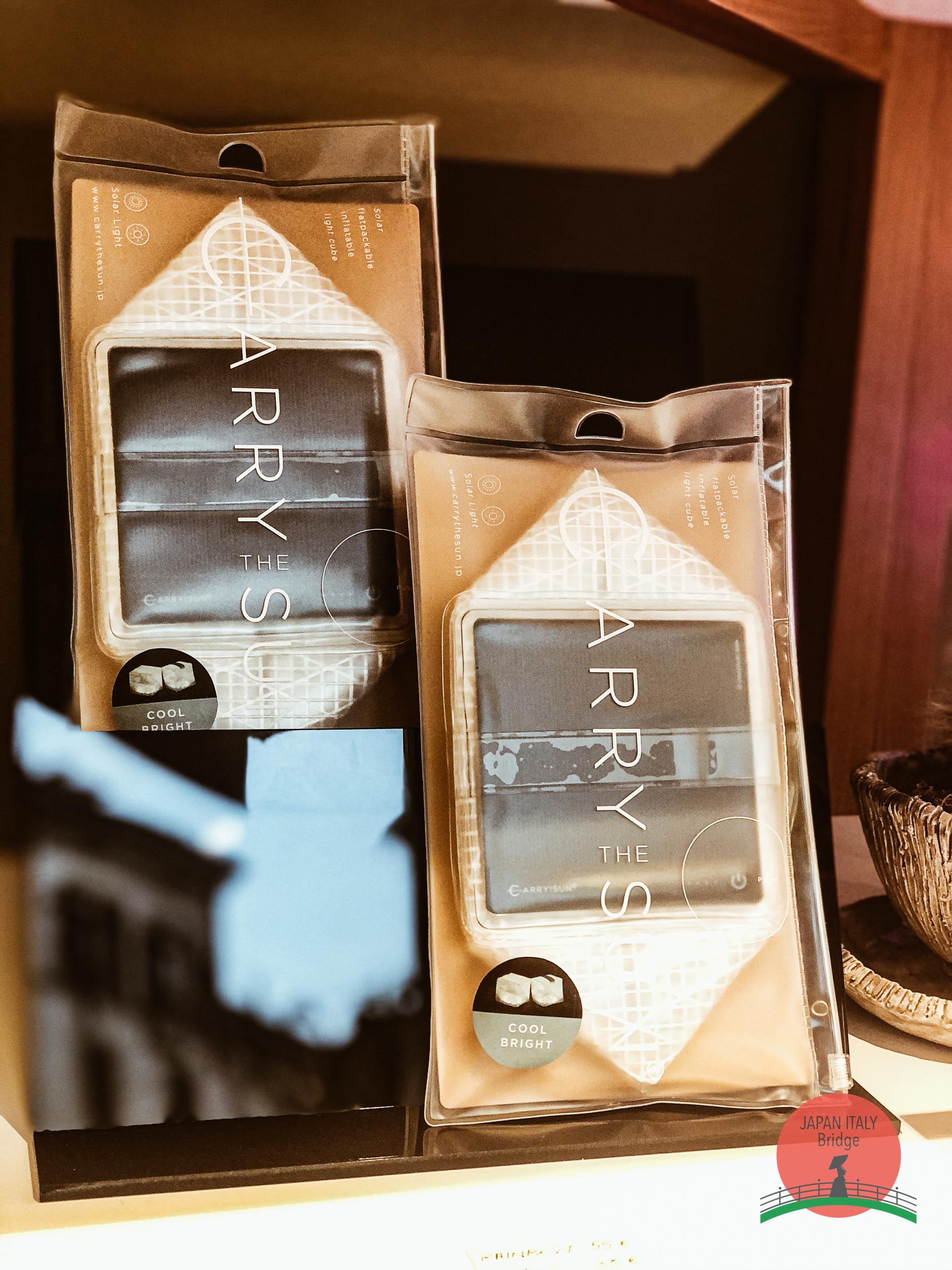
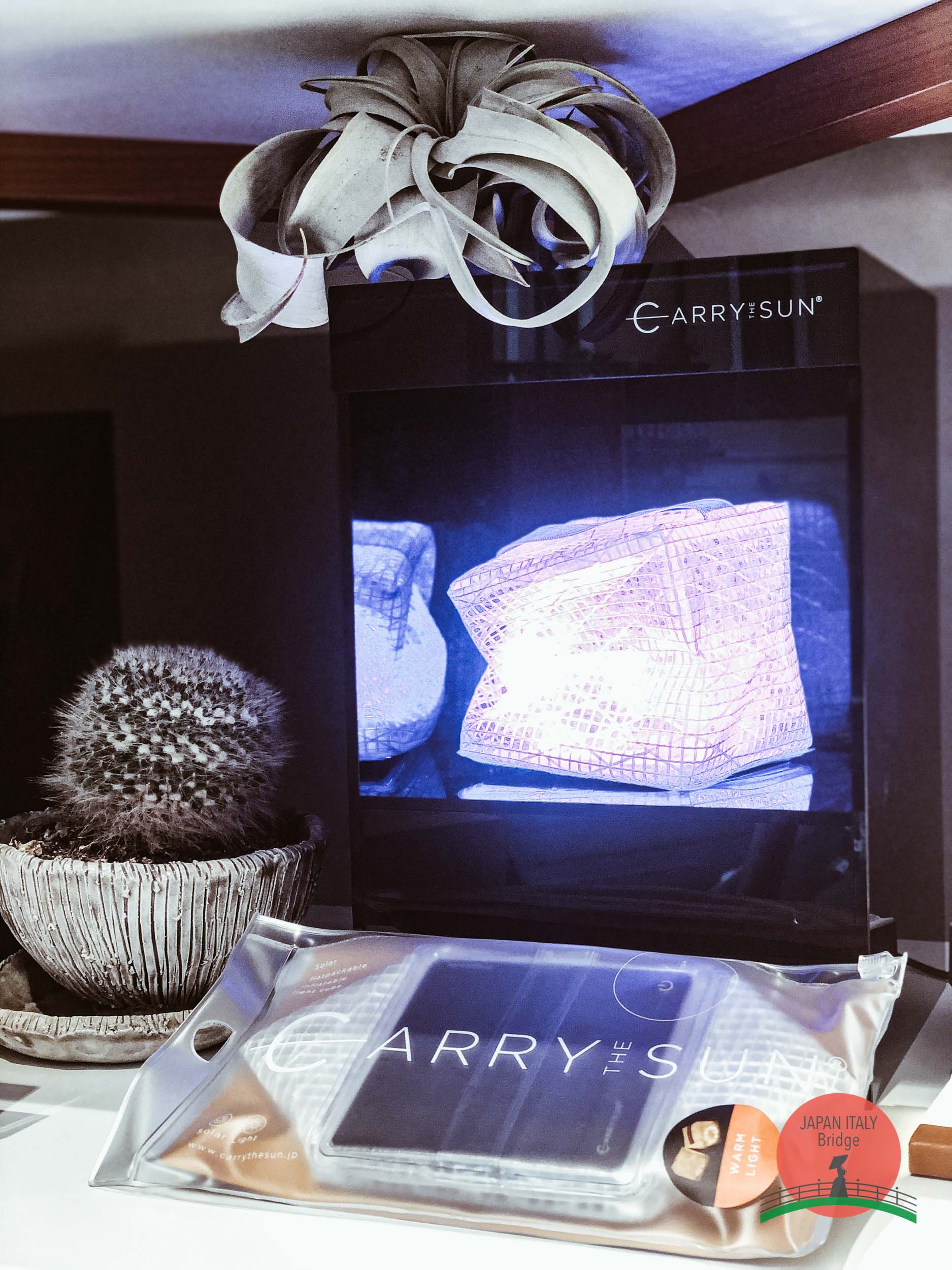
Cosa c’è di più naturale della luce del sole? Quella luce che ci coccola quando siamo da soli, quando abbiamo bisogno di aiuto o di vedere la strada davanti a noi in casi di emergenza? Oppure state cercando un’idea regalo particolare e sicuramente unica? Una di quelle idee regalo che lasceranno le persone senza parole e con la classica espressione di stupore negli occhi. Regalate la luce del sole, CARRY THE SUN di Landport è quello che stavate aspettando e potete trovarlo nello shop di TENOHA MILANO da ora!
Dettagli
Official website: https://www.landport.co.jp/ , https://www.carrythesun.jp/
Socials: Official Instagram, Official Facebook
Dove acquistare: https://www.tenoha.it/shop/
TOKYO TESHIGOTO festeggia l'arrivo a Milano
Siete pronti per vivere TOKYO TESHIGOTO a TENOHA MILANO con uno speciale evento tradizionale e moderno?
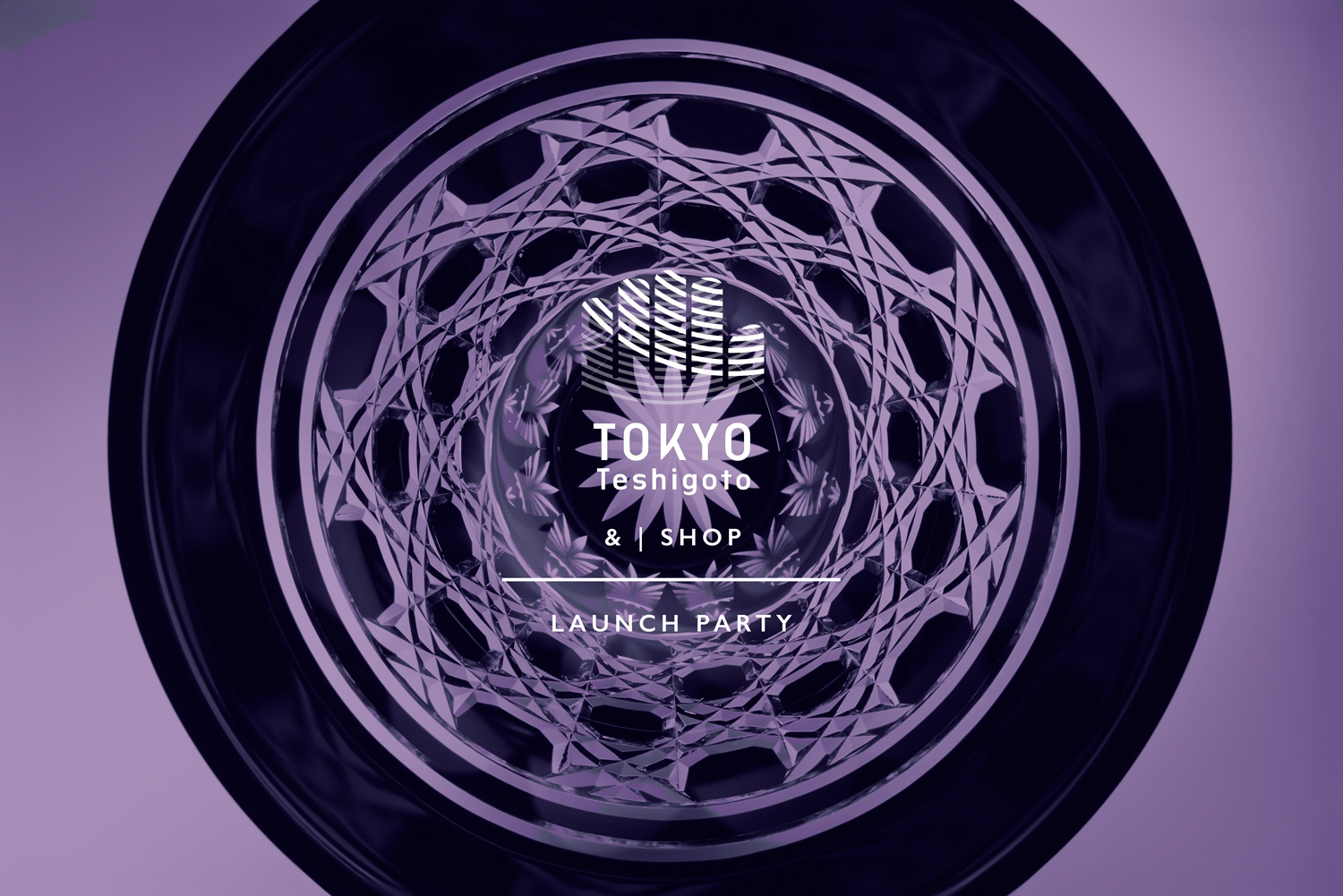
TOKYO TESHIGOTO è un progetto che mischia l’abilità degli artigiani di Tokyo e la produzione moderna. Sicuramente sapete quanto ricca sia l’arte tradizionale giapponese che è stata creata dagli artigiani Edo e quanto importante sia trasmetterla alle nuove generazioni. Per questo TENOHA Milano ci propone un altro viaggio in Giappone alla scoperta dei lavori manuali dei maestri chiamati “Takumi” e dell’estetica Edo. Oltre a diffondere l'estetica Edo di "iki" e "inase” i Takumi stanno sfidando nuovi tipi di artigianato di Tokyo in modo che più persone possano conoscerlo e viverlo. Potete trovare tutti i prodotti TOKYO TESHIGOTO allo shop di TENOHA Milano, per toccare con mano l’emozione dell’epoca Edo e portarvela a casa.
TENOHA Milano ovviamente non poteva evitare di celebrare questa grande novità! Non mancate al launch party di TOKYO TESHIGOTO! Vi sentirete non solo più vicini alla storia del Giappone, ma anche arricchiti internamente da qualcosa che normalmente non potreste vivere. Sarà una serata fuori dal comune in cui la tradizione si sposa con la modernità: la storia del Giappone arricchita dal DJ set di Andrea Ratti. Cosa aspettate? Avete voglia di trascorrere una di quelle serate speciali che solamente TENOHA Milano può organizzare per voi?
Dettagli
Tutti i prodotti saranno disponibili all’acquisto da TENOHA & | SHOP
LAUNCH PARTY
Quando: 25 Gennaio dalle 18.00 alle 20.00
Dove: TENOHA MILANO — Via Vigevano, 18, 20144 Milano
INGRESSO LIBERO
OFFICIAL WEBSITE
https://tokyoteshigoto.tokyo/en/
More info:
https://www.tenoha.it/shop/tokyo-teshigoto/
Japan History: Shimazu Yoshihiro
Shimazu Yoshihiro (21 agosto 1535 – 30 agosto 1619), conosciuto anche come Shimazu Tadahira e Hyogo no kami. Secondogenito di Shimazu Takahisa, egli era il 17° capo clan degli Shimazu.
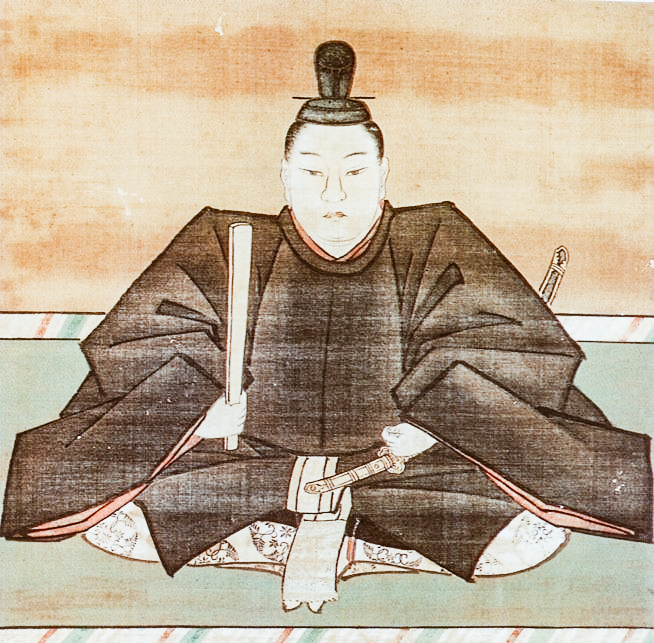
Photo credits: japanworld.info
Ha cominciato servendo suo fratello Yoshihisa in molte campagne militari. Durante la battaglia di Kizaki, la "Okehazama del Kyūshū" nel 1572, 300 uomini di Yoshihiro sconfissero I tremila soldati di Itō Yoshisuke. Nel 1577 ha ottenuto la supremazia degli Shimazu sulla provincia di Hyūga. Successivamente ha partecipato alle battaglie di Takabaru (1576), Mimigawa (1576), Minamata (1581), e Hetsugigawa (1587).
La vita di Shimazu Yoshihiro: Dal 1587 al 1600
Nel 1587 venne nominato daimyō a seguito della sottomissione degli Shimazu a Hideyoshi. Successivamente guidò 10.000 uomini nella prima campagna coreana (1592-93) dalla sua nave Kotaka-maru. Durante questa battaglia, un certo numero di servitori tra cui suo fratello Toshihisa, protestarono alla chiamata alle armi per questo furono puniti da Yoshihiro. Ha poi combattuto la seconda campagna coreana nelle battaglie di Namwon e Sacheon. Con queste battaglie ha rapito alcuni vasai coreani come prigionieri di guerra. Questo, creò un nuovo stile di vasi detto Satsuma-yaki che aumentò successivamente il commercio della provincia.
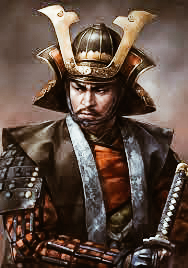
Photo credits: facebook.com
Durante la battaglia di Sekigahara del 1600, secondo il romanzo Rakusuishū del periodo Edo, Yoshihiro sembra sia stato dalla parte di Tokugawa Ieyasu. Successivamente umiliato da Torii Mototada all'arrivo al castello di Fushimi, passò dalla parte di Ishida Mitsunari prima che Mōri Terumoto dichiarasse guerra persuadendo Uesugi Kagekatsu ad allearsi con loro.
Yoshihiro e Mitsunari
Secondo il suo subordinato Kando Kutarō, Yoshihiro era molto amico di Mitsunari. Tuttavia, i romanzieri del periodo Edo, distorsero la realtà dicendo che Mitsunari non avesse ascoltato nessuno dei piani di Yoshihiro, tra cui il noto attacco notturno a sorpresa del giorno prima della vera battaglia. Invece, quel giorno, Yoshihiro e i suoi 1500 samurai semplicemente stavano presiedendo la loro zona senza combattere. Yoshihiro fu preso d'assalto da almeno 30.000 truppe di Ieyasu per questo cercò molte volte di arrivare allo stesso Ieyasu. Yoshihiro si ritirò e le sue truppe simularono un finto ritiro chiamato Sutegamari quando un certo numero di uomini morirono respingendo gli attacchi. Toyohisa e la maggior parte delle truppe morirono permettendo a Yoshihiro di ritirarsi con la moglie. Si spostò quindi dalla provincia di Settsu per tornare nella provincia di Satsuma.

Photo credits: japanworld.info
Shiramine Jun, importante storico giapponese ha scritto che Yoshihiro era stato coinvolto nella lotta di potere tra Shimazu Yoshihisa e Ijuin Tadamune. Infatti, per questo motivo, Yoshihiro perse l'appoggio di Yoshihisa durante la campagna di Sekigahara.
Ieyasu, notando il comportamento di Yoshihiro sul campo di battaglia, fece in modo che il clan Shimazu mantenesse il suo dominio. Infatti, scelse come successore proprio il figlio di Yoshihiro, Shimazu Tadatsune. Nel 1609, Yoshihiro e Tadatsune iniziarono una spedizione punitiva contro il regno delle Ryūkyū.
Sembra abbia combattuto in 52 battaglie durante la sua vita e che fu un abile comandante.
La Morte
Yoshihiro si ritirò a Sakurajima e iniziò a insegnare alle giovani generazioni. Morì nel 1619 provocando il suicidio di molti suoi servitori che lo avevano affiancato per tutto il resto della sua vita.
Japan History: Kusunoki Masashige
Kusunoki Masashige, (1294 - 4 Luglio 1336) nacque a Minato-gawa, provincia di Settsu, e fu un samurai del XIV secolo che combatté per l'imperatore Go-Daigo nella guerra di Genkō.
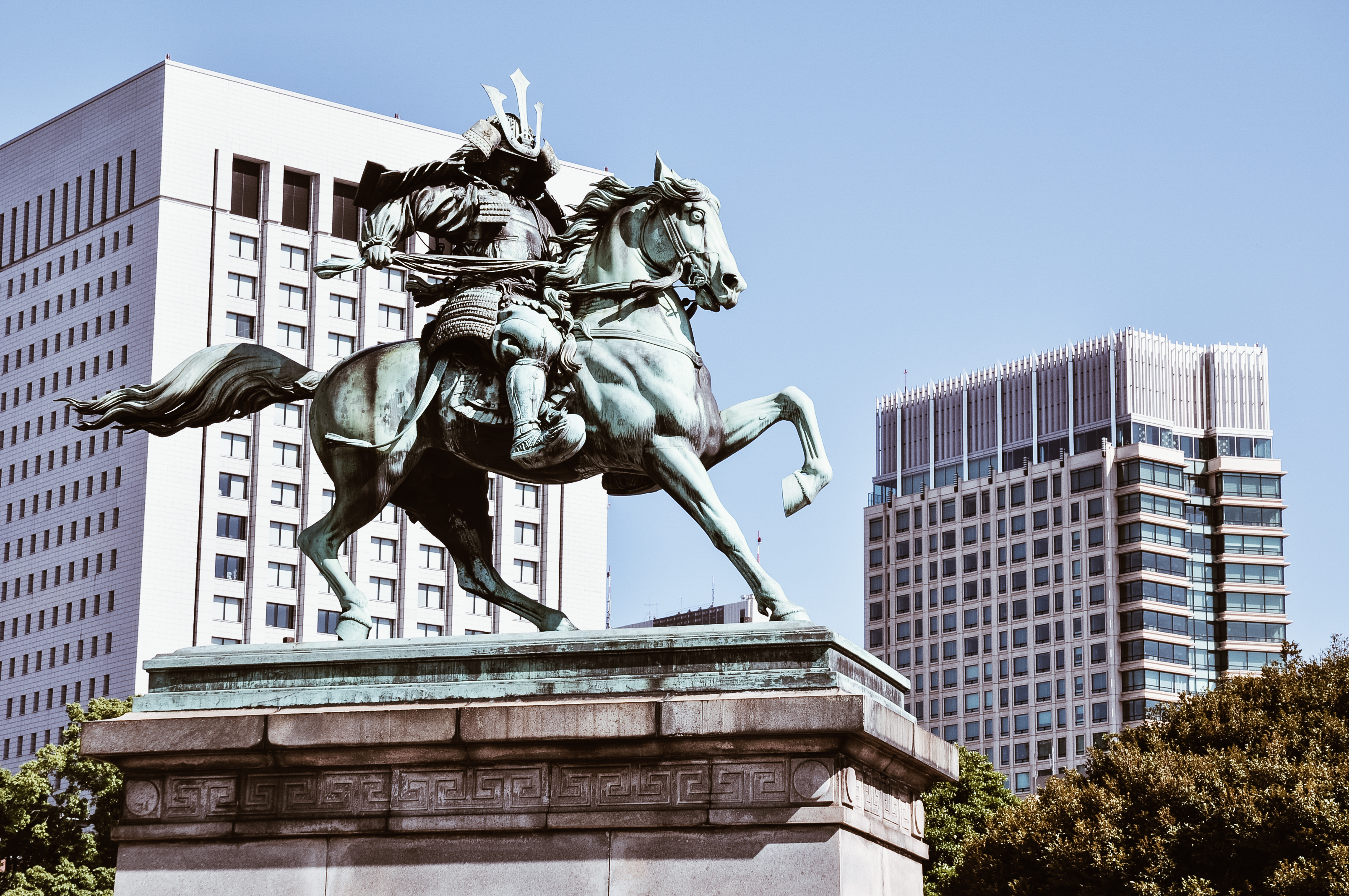
photo credit: ninja.fandom.com
Gran parte della sua prima educazione avvenne nel tempio di Kanshin-ji a Kawachinagano, nel sud di Osaka, dove più tardi avrebbe organizzato notevoli restauri.
La leggenda narra che l'imperatore Go-Daigo fece un sogno in cui si stava rifugiando sotto un albero di canfora ( il “kusunoki ). Questo sogno lo portò al cognome del guerriero che lo avrebbe sostenuto. Infatti, nel 1331 Kusunoki si unì all'imperatore Go-Daigo in una rivolta per strappare il potere del governo dallo shogunato, la dittatura militare che aveva dominato il Giappone dal 1192. Sebbene le truppe shogunate numericamente più forti catturarono l'imperatore, Kusunoki fuggì continuando ad usare tattiche di guerriglia.
La cattura di Kusunoki vicino a Nara nel 1332 si rivelò una grave minaccia per il governo. Lo shogun concentrò quindi tutte le sue forze contro Kusunoki. In una delle battaglie più famose della storia giapponese, Kusunoki difese con successo la fortezza di Chihaya contro le forze shogunali superiori.
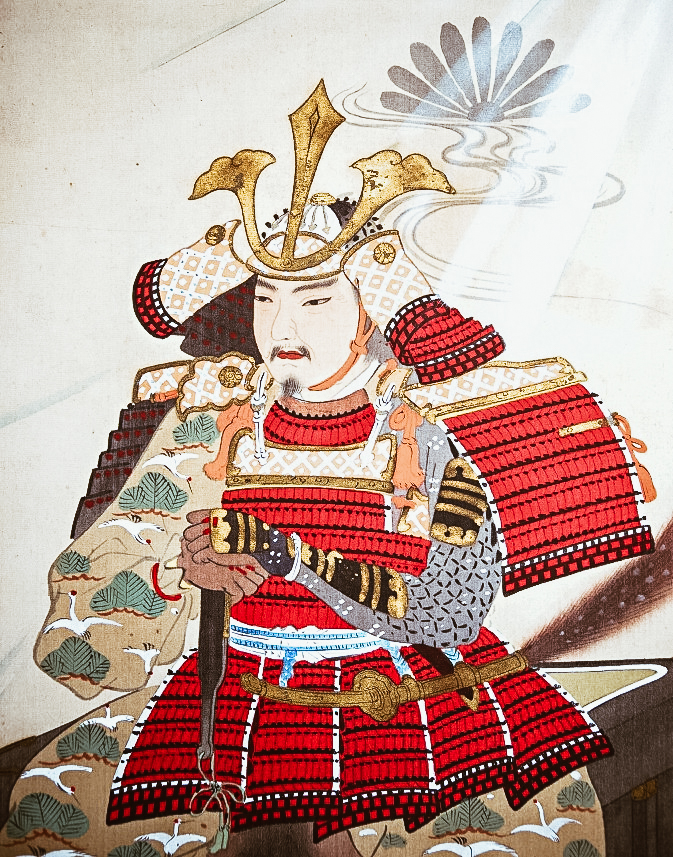
photo credit: davtov2000.blogspot.com
Dal 1333 al 1335
Nel 1333, Go-Daigo ricompensò Masashige con il governatorato della provincia di Settsu e della provincia di Kawachi e la promozione al quinto grado. Successivamente, ricevette la nomina nel Records Office and Settlement Board. Tuttavia, uno dei generali lealisti, Ashikaga Takauji, tradì Go-Daigo e guidò un esercito contro Kusunoki. Takauji si impossessò di Kyoto, ma solo temporaneamente prima che Nitta Yoshisada e Masashige costrinsero Takauji a fuggire. Nel 1336 Takauji era di nuovo una minaccia per Kyoto.
Durante il breve periodo successivo del dominio imperiale, Kusunoki fu governatore delle province giapponesi centrali di Settsu. Il vero potere nelle campagne, tuttavia, continuò a essere detenuto dai grandi signori ereditari, Ashikaga Takauji e Nitta Yoshisada. Questi ultimi si sfidarono apertamente per ottenere la lealtà dei capi minori feudali.
Kusunoki suggerì all'Imperatore di rifugiarsi sul sacro Monte Hiei e permettere a Takauji di prendere Kyoto. Questo per permettergli di scendere dalla montagna e, con l'aiuto dei monaci del Monte Hiei, intrappolare Takauji.
Go-Daigo non era disposto a lasciare la capitale e insistette sul fatto che Kusunoki incontrasse le forze di Takauji sul campo. Kusunoki, in quello che sarebbe poi stato visto come l'ultimo atto di lealtà dei samurai, accettò obbedientemente. La battaglia, che ebbe luogo a Minatogawa, nell'odierna Chūō-ku, Kobe, fu un disastro tattico. Ci sono due resoconti della proposta fatta da Kusunoki Masashige all'imperatore Go-Daigo, il Taiheiki e il Baisho Ron, entrabe ingorati. Uno era che si sarebbero raggruppati e avrebbero attaccato da due parti, l'altro era che riportare il generale Takauji dalla loro parte.
L’esercito di Kusunoki era solo 50 dei 700 cavalieri. Secondo la leggenda, le ultime parole di suo fratello Masasue furono Shichisei Hōkoku! ("Vorrei avere sette vite da dare al mio imperatore!”). Ovviamente Kusunoki Masashige fu d'accordo.
Alla sua morte, la sua testa fu inviata a Kanshin-ji e sepolta in una tomba nota come Kubi-zuka.
Il castello di Eboshigata e il castello di Ishibotoke furono entrambi costruiti lungo il percorso del Koya Kaido, una famosa via di pellegrinaggio che si estende tra Kyoto e Koyasan. Progettati non solo per proteggere la pista dai banditi, questi erano anche un'importante fonte di reddito visto che i viaggiatori erano obbligati a pagare un pedaggio.
Dal 1335 alla restaurazione Meiji
Nel 1335 Go-Daigo si schierò con Nitta Yoshisada contro Ashikaga Takauji. Come capo delle forze imperiali, Kusunoki sconfisse le truppe di Takauji nel gennaio 1336 e lo costrinse a fuggire dalla capitale. Pochi mesi dopo, tuttavia, Takauji tornò alla testa di un grande esercito. Kusunoki suggerì di ritirarsi temporaneamente in modo da poter combattere le forze di Takauji in un punto in cui il terreno era più favorevole. L'imperatore insistette sul fatto che Kusunoki incontrasse le forze nemiche prima di occupare la capitale. Nella battaglia finale sul fiume Minato, vicino al moderno Kōbe, Kusunoki combatté coraggiosamente per molte ore. Le sue truppe furono infine sopraffatte e si suicidò piuttosto che affrontare la cattura.
Suo figlio, Kusunoki Masatsura, servì il successore dell'imperatore, il dodicenne Go-Murakami, in una relazione di reciproca fiducia che rispecchiava la figura di suo padre Kusunoki e manteneva viva la fiamma della resistenza lealista.
Dopo il restauro imperiale del 1868, uno splendido santuario fu eretto sul luogo della morte di Kusunoki. La sua lealtà verso l’imperatore ed il suo essere uno dei più grandi strateghi militari della storia giapponese, lo hanno reso una figura leggendaria. Ha anche ricevuto la più alta decorazione dal governo giapponese Meiji nel 1880

photo credit: wikipedia.org
Leggenda
Dopo l'introduzione del Neoconfucianesimo come filosofia statale da parte dello shogunato Tokugawa, Kusunoki Masashige fu dichiarato con l'imperatore Go-Daigo precursore degli assolutisti sinocentrici. Durante il periodo Edo, studiosi e samurai che furono influenzati dalle teorie neoconfuciane crearono la leggenda di Kusunoki. Lo consacrarono eroe patriottico, col nome di Nankō o Dai-Nankō, incarnazione di lealtà, coraggio e devozione all'Imperatore. Kusunoki divenne in seguito una sorta di santo patrono dei kamikaze della Seconda Guerra Mondiale. I suoi eredi spirituali erano quelli che sacrificavano la propria vita per l'imperatore.
Japan History: Takeda Shingen
Takeda Shingen (Takeda Harunobu 1 ° dicembre 1521 - 13 maggio 1573), primogenito del signore della guerra Takeda Nobutora, nacque nel potente clan Takeda. Egli era Shugo Daimyo (governatori militari) dell’allora provincia di Kai, attuale prefettura di Yamanashi.
Takeda Shingen ebbe un ruolo molto importante nella battaglia di Un no Kuchi nel 1536, a soli 15 anni. Quando suo padre designò il suo secondo figlio come erede, Shingen condusse un colpo di stato senza spargimento di sangue. Questo costrinse il padre a ritirarsi come capo del clan. Successivamente, Shingen iniziò ad espandere i domini della sua famiglia verso nord nella provincia di Shinano (attuale prefettura di Nagano) e in terre adiacenti a Kai.
Come capo indiscusso del clan Takeda, iniziò la sua politica espansionistica partendo dalla Battaglia di Sezawa. Proseguì poi con gli assedi di Uehara, Kuwabara e Fukuyo, le battaglie di Ankokuji, Odaihara, Shiojiritoge, e la serie di Battaglie di Kawanakajima contro Uesugi Kenshin.
Shingen decise di far indossare a tutti i guerrieri un'armatura rossa laccata nelle prime linee dei suoi eserciti per intimidire psicologicamente il nemico. Questa idea fu anche successivamente copiata dal clan dell'esercito Tokugawa.
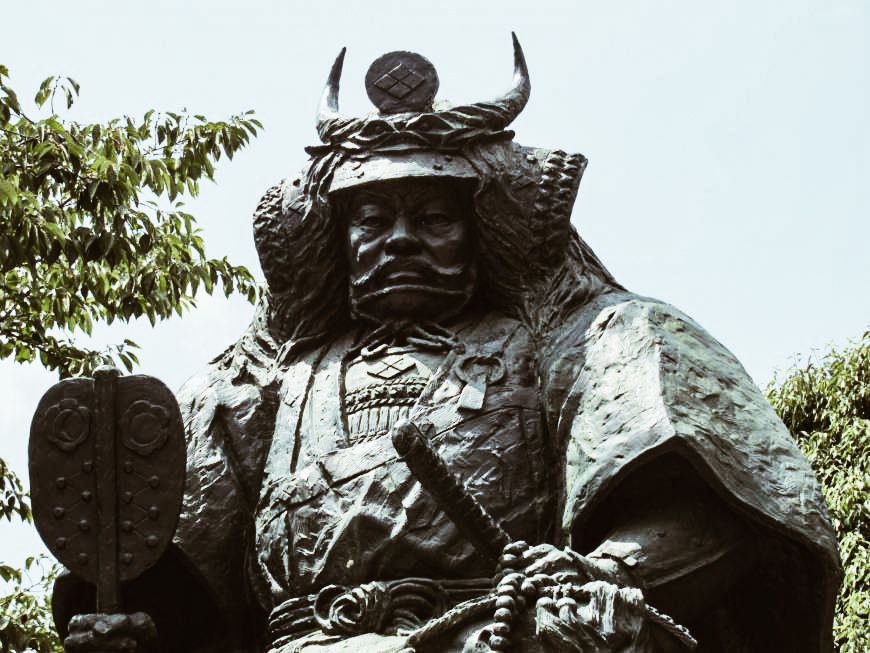
photo credits: japantimes.co.jp
La vita di Takeda Shingen
Nel 1548 Takeda Shingen sconfisse Ogasawara Nagatoki nella battaglia di Shiojiritōge e prese Fukashi nel 1550. Uesugi Kenshin scese in campo in quel momento poiché i Takeda erano ormai giunti ai confini della sua provincia.
Quella che iniziò fu una rivalità che diventerà leggendaria e che li portò a scontrarsi nelle battaglie di Kawanakajima. Queste battaglie furono generalmente delle schermaglie, infatti nessuno dei due daimyō voleva scoprirsi in una battaglia a tutto campo.
La battaglia più feroce tra i due fu la quarta, durante la quale, secondo la leggenda, Uesugi Kenshin riuscì ad aprirsi un varco tra le linee Takeda e affrontò Shingen. Si narra che Kenshin attaccò Shingen con la sua spada difendendosi con il suo ventaglio (o tessen). Entrambi persero numerosi uomini durante la battaglia. In particolare Shingen perse due importanti generali, Yamamoto Kansuke e suo fratello più giovane Takeda Nobushige.
Takeda Shingen entrò nel sacerdozio nel 1551, momento in cui assunse il nome buddista Shingen. Tuttavia, prendere i voti religiosi non impedì in alcun modo la sua partecipazione agli affari mondani.
Dopo la quarta battaglia, Shingen scoprì due complotti alla sua vita. Il primo da parte di suo cugino Suwa Shigemasa, al quale fu ordinato di commettere seppuku. Mentre il secondo, qualche anno più tardi da suo figlio Takeda Yoshinobu. Quest'ultimo fu esiliato presso il tempio Toko, dove morì due anni dopo forse per ordine del padre. Dopo questo incidente, Shingen designò il suo quartogenito, Katsuyori come successore alla guida del clan.
Dopo aver conquistato Katsurao, Wada, Takashima e Fukuda, nel 1554 riportò altrettante vittorie negli assedi di Fukushima, Kannomine, Matsuo e Yoshioka.
Nel 1563, insieme a Hōjō Ujiyasu, Takeda Shingen conquistò il castello di Matsuyama nella provincia di Musashi. Successivamente ottenne il possesso di Kuragano nel 1565 e del castello di Minowa. Poi si mosse contro gli Hōjō attaccando il castello di Hachigata.
Si ritirò con successo dopo che Hōjō Ujiteru e Hōjō Ujikuni fallirono il tentativo di fermarlo nella battaglia di Mimasetōge.
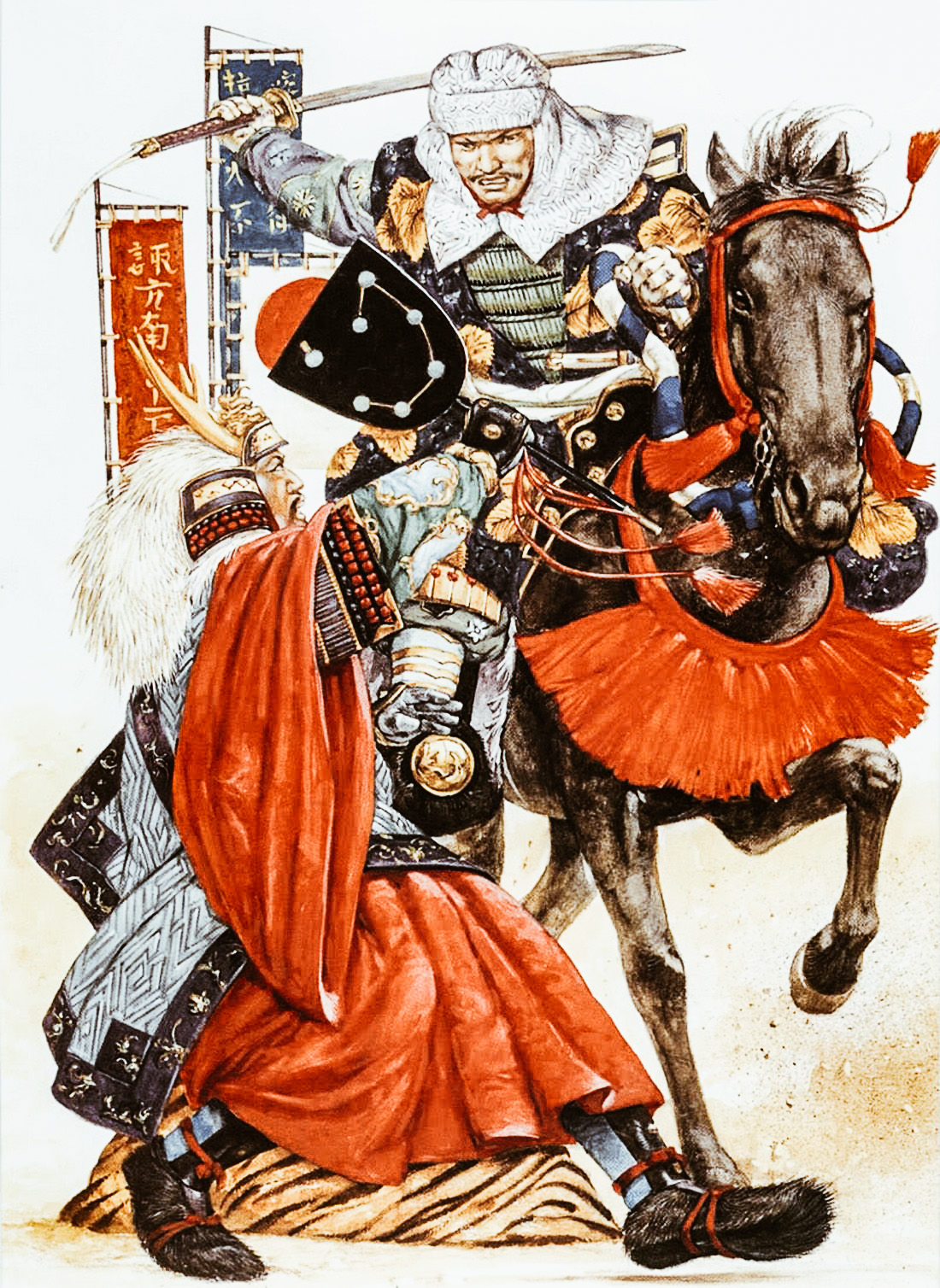
photo credits: pinimg.com
La principale ambizione di Harunobu era la sottomissione di Shinano. Tuttavia, la resistenza in quel quartiere fu feroce. Un certo numero di signori della guerra Shinano, tra cui Murakami Yoshikiyo, Ogasawara Nagatoki, Suwa Yorishige e Kiso Yoshiyasu, fecero una mossa progettata per sperare di troncare sul nascere un'ulteriore aggressione Takeda.
La marcia verso il confine del Kai
Nell'aprile del 1542 i quattro daimyo combinarono le forze e marciarono verso il confine di Kai, incoraggiati dalla notizia che Harunobu stava rafforzando le sue difese e si preparava a prendere posizione a Fuchu. In effetti, le attività di Harunobu furono uno stratagemma. Lungi dall'attendere passivamente a Kai, Harunobu guidò i suoi uomini e colse di sorpresa i guerrieri Shinano, sconfiggendoli a Sezawa.
Incoraggiato dai risultati di Sezawa, Harunobu fece un viaggio a Shinano concentrandosi sul territorio del clan Suwa. Prese prima Uehara in un attacco a sorpresa e poi si trasferì nel quartier generale di Suwa a Kuwahara, situato a 2 chilometri a est. Suwa Yorishige non ebbe altra scelta che arrendersi in seguito alla promessa di condotta sicura da parte di Harunobu. Yorishige e suo fratello furono portati a Kai dove il generale Takeda, Itagaki Nobutaka, organizzò la loro morte. Entrambi i Suwa si suicidarono.
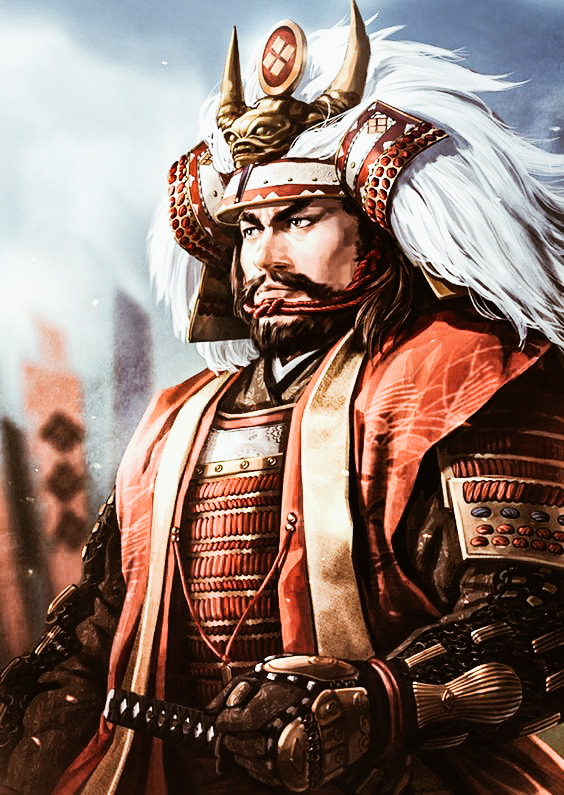
photo credits: pinterest.it
Harunobu, con l'aiuto delle strategie di Yamamoto Kansuke, espanse ulteriormente il suo territorio attraverso la sconfitta di Tozawa Yorichika e Takato Yoritsugu. L'acquisizione del castello di Takato fu di particolare valore. Infatti, essa fornì una zona di sosta sicura nel sud di Shinano, nonché un cuscinetto contro qualsiasi aggressione meridionale.
Nel 1544 i Takeda marciarono verso Suruga a sostegno dell'Imagawa e affrontarono Hôjô Ujiyasu. Non avvenne alcun conflitto reale a seguito di questo scontro. Harunobu fu infatti costretto a stipulare un trattato di pace tra Hōjō e Imagawa.
Nel corso del decennio successivo, Harunobu continuò a esercitare una pressione incessante sui signori della guerra Shinano. Nel 1548 Murakami Yoshikiyo, forse il più formidabile nemico Shinano di Harunobu, si spostò su Ueda e sconfisse il clan Takeda in un aspro scontro. Qui vennero usati un certo numero di archibugi cinesi, le prime armi del genere mai schierate in una battaglia giapponese. Mentre la sconfitta di Uehara lasciava morti due dei suoi migliori generali, Harunobu rimbalzò rapidamente. Infatti, nel 1552 i clan Murakami e Ogasawara fuggirono da Shinano a Echigo.
Takeda Shingen vs Uesugi Kenshin
Nel giugno e nell'ottobre del 1553 gli eserciti Takeda e Uesugi si scontrarono vicino alla pianura Kawanakajima nel nord di Shinano. Uno scontro durato cinque volte ma solo la quarta battaglia produsse una gara a tutto campo. Entrambe le parti subirono pesanti perdite che rallentarono entrambi i signori della guerra per alcuni anni. In particolare, Shingen deve aver risentito della perdita di Nobushige e Yamamoto Kansuke, entrambi deceduti nella battaglia.
Nel 1560 Shingen aveva scoperto un complotto contro di lui guidato da sua cugina Katanuma Nobumoto e nel 1565 quello diretto da suo figlio Yoshinobu e Obu Toramasa. Due anni dopo Yoshinbou morì. Leggenda dice che la morte sia dovuta o a malattia o, come molti credono, perché Shingen lo aveva costretto a suicidarsi. L'evento lasciò i servitori di Takeda a disagio.

photo credits: wikipedia.org
Nel 1564, Shingen aveva sottomesso tutto Shinano e spostato la sua attenzione su Kōzuke, dove prese un certo numero di castelli dal clan Uesugi. Per i successivi cinque anni, si limitò alle incursioni e alle conquiste locali, concentrandosi sugli affari interni.
Nel 1560, il più grande successo di Shingen fu il progetto di Damji River Damming. Il beneficio del progetto del fiume Fuji è considerato una delle più grandi iniziative nazionali del XVI secolo.
Nel 1568, l'esercito di Takeda era di nuovo in movimento, questa volta a sud contro Imagawa. Il daimyō di quel clan era Ujizane, il figlio incompetente del defunto Imagawa Yoshimoto (ucciso nel 1560 da Oda Nobunaga). Yoshinobu, figlio di Shingen, aveva sposato la sorella di Ujizane, ma dopo il suicidio della stessa nel 1567, i rapporti tra le famiglie si erano acuiti. Sembrerebbe che Shingen e Tokugawa Ieyasu avessero stipulato un accordo in base al quale i due avrebbero diviso le terre rimanenti dell'Imagawa (Tōtōmi e Suruga). Tuttavia, questo accordo non fu mai portato a compimento. Inoltre, l'Hōjō di Sagami non vedeva di buon grado questo spostamento nell'equilibrio del potere. A causa di ciò, inviò le truppe a sfidare Shingen. Nel 1569 Shingen rispose invadendo Sagami e assediando Odawara (la capitale dell'Hōjō). Tuttavia, sulla via del ritorno a Kai, l'esercito Takeda riuscì a schiacciare un tentativo di agguato da parte di Mimasetoge di Hōjō.
Così, nel 1570, le terre di Takeda includevano Kai, Shinano, Suruga e pezzi di Kozuke, Tōtōmi e Hida. Shingen, a 49 anni, era ormai più di un potere regionale. Takeda Shingen era di fatto il più importante signore della guerra a est di Mino. Inoltre, fu l’unico in grado di far deragliare la marcia di Oda Nobunaga all'egemonia nazionale. Solo Shingen possedeva la posizione strategica e le forze armate per fermarlo.
Nel 1570 morì il formidabile Hōjō Ujiyasu e il suo erede, Ujimasa, fece pace con Shingen. Questo fu un atto che avrebbe potuto assicurare la distruzione definitiva di Tokugawa Ieyasu. Tuttavia, Shingen morì nel 1573 mandando i piani in fumo.
Il clan Takeda si allea con il clan Oda
Nel frattempo, i Takeda e gli Oda, puntavano al controllo del clan Uesugi. Dopo un corteggiamento diplomatico fallito, essi avviarono una guerra di parole con lo shogun Ashikaga Yoshiaki.
Shingen intensificò la pressione contro Tokugawa e nel 1572 lanciò un attacco a Tōtōmi che portò alla cattura di Futamata. Il seguente gennaio, Shingen ritornò nella provincia e attirò Tokugawa Ieyasu nella Battaglia di Mikatagahara. Condotta il 6 gennaio a nord di Hamamatsu, si concluse con una sconfitta quasi completa per Ieyasu.
Sebbene fossero spesso presentate come mosse iniziali in una marcia su Kyōto, le intenzioni di Shingen erano senza dubbio più conservative. Probabilmente, Takeda Shingen mirava a testare le risposte sia di Ieyasu che di Nobunaga e, se possibile, infliggere ai due una sconfitta. In ogni caso, entro pochi giorni dalla vittoria della battaglia, ricevette la notizia che Asakura Yoshikage aveva scelto di non opporsi a Nobunaga. Shingen rimase dispiaciuto, e avrebbe potuto contare su Yoshikage per mantenere la tensione su Nobunaga. Questo potrebbe aver giocato un ruolo nella sua decisione di tornare a Kai garantendo così una tregua al sanguinario Tokugawa.
La figura di Takeda Shingen
Shingen era una figura complicata, a volte assolutamente crudele. All'inizio della sua vita, aveva costretto Suwa Yorishige a suicidarsi (o lo aveva assassinato) dopo che i due signori della guerra avevano firmato un trattato di pace. Successivamente prese la figlia di Suwa come amante, ignorando il fatto che lei fosse tecnicamente la sua stessa nipote .
Apparentemente Shingen creò lo Shingen Tsuba, (la guardia della spada) noto anche come Takeda Tsuba. La storia racconta che mentre aspettava l'inizio di una battaglia, Shingen avvolgeva il filo di ottone attorno a un grande sukashi di ferro per tenersi concentrato e capace di pensare fino a quando la battaglia aveva inizio. A causa di ciò, molti dei suoi vassalli seguirono la guida di Shingen per tutto il periodo Edo.
È anche accreditato di aver inventato lo scarico del water, l'igiene del bagno, a quanto pare, era importante per Shingen. Inoltre, costruì le vaste dighe conosciute come Shingen Zutsumi lungo i segmenti Kamanashi del fiume Fuji. Questi muri hanno impedito le inondazioni ed è stata una delle più grandi e ambiziose iniziative di lavori pubblici nazionali del XVI secolo.
Le ben ponderate leggi di Shingen non erano considerate particolarmente severe. Ha sospeso le punizioni corporali per la maggior parte dei reati minori. Infatti, adottò un sistema di multe finanziarie, che gli valse il rispetto e l'elogio dei contadini e dei cittadini della provincia di Kai.
È interessante notare che Shingen aveva anche due grandi calderoni di ferro in cui far bollire alcuni criminali vivi. Tokugawa Ieyasu, pensando che la punizione fosse eccessivamente crudele, anni dopo distrusse i calderoni.
La sua riforma economica era anche innovativa all’epoca. Infatti, Takeda Shingen tassò la maggior parte dei suoi soggetti in modo uniforme e consentì loro l'opzione dei pagamenti in oro o riso.
Takeda Shingen aveva piani sui distretti di Mikawa e Owari (ora entrambi Prefettura di Aichi). Nel 1571 entrò nei territori del clan Okudaira (successivamente Tokugawa) e catturò il castello di Noda.
Nel 1573, invase Mikawa e di nuovo attaccò il castello di Noda. Tuttavia, questa volta, le fortificazioni del castello erano state rafforzate, consentendo di resistere per diverse settimane.

photo credits: wikimedia.org
La morte
Verso la fine dell'assedio, appena prima che i difensori del castello di Noda capitolassero, Takeda Shingen fu fucilato il 13 maggio 1573 da un tiratore scelto. Shingen è morto durante la fuga.
La morte di Takeda Shingen all'età di 49 anni rimase un segreto. I resti della pistola che sparò a Shingen sono conservati nel Museo Shitagahara a Nagashino, nella prefettura di Aichi. Suo figlio e successore, Takeda Katsuyori, fu sconfitto da Oda e Tokugawa nei primi anni del 1580, ponendo così fine al potere della famiglia Takeda
Al posto di un poema della morte, lasciò le seguenti parole, prese a prestito dalla letteratura Zen: "È in gran parte lasciato alla sua naturale perfezione corporale, e non ha alcun bisogno speciale di ricorrere alla colorazione artificiale e alla cipria per apparire bello.”
Scoprendo le meraviglie di Okinawa
Le isole Okinawa formano il gruppo principale dell'arcipelago giapponese delle Ryūkyū. Esse comprendono l'omonima isola insieme ad altre minori e fanno parte della prefettura di Okinawa il cui capoluogo è Naha.
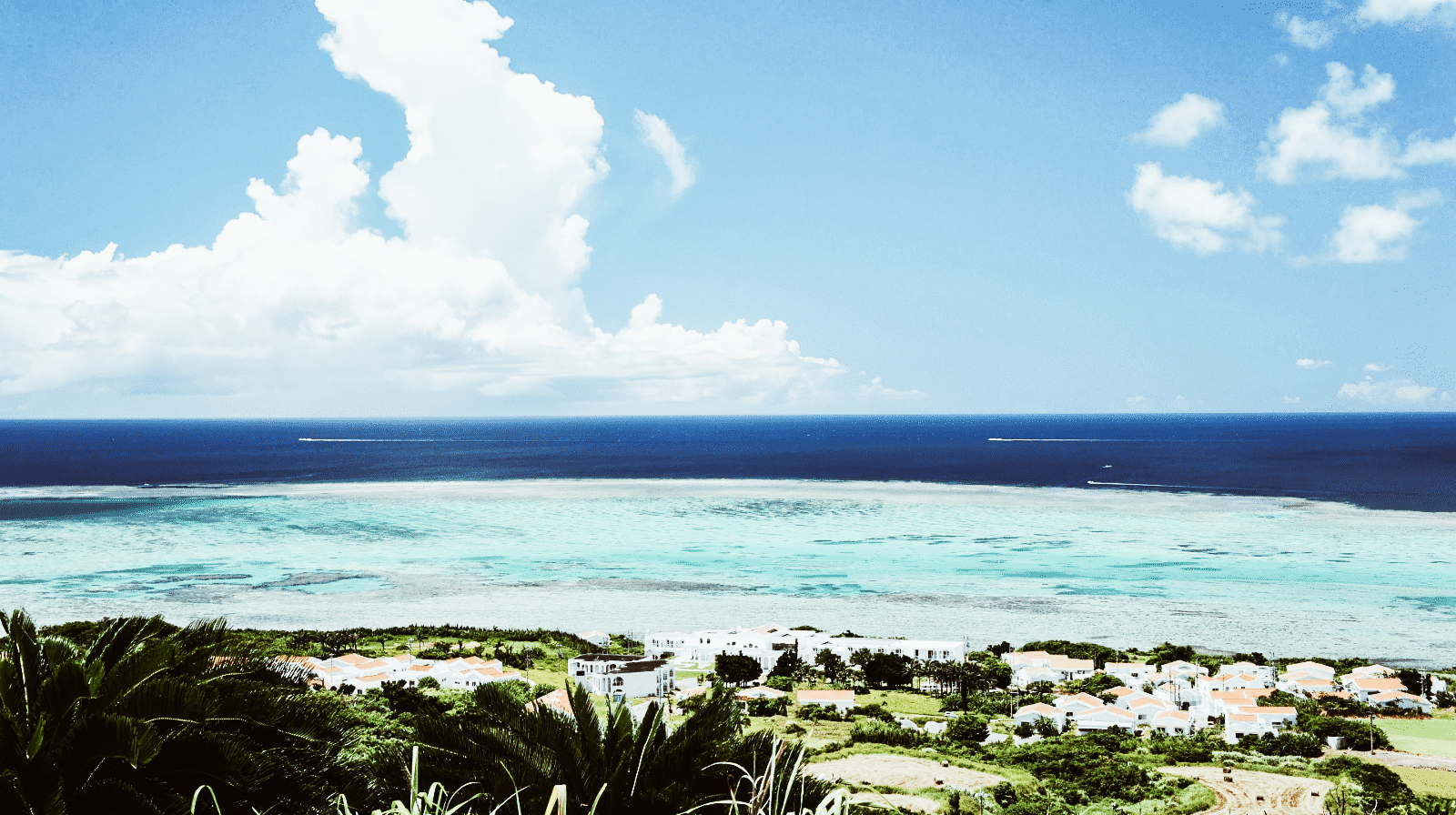
photo credits: jw-webmagazine.com
Da Okinawa proviene la famosa arte marziale del karate. Questa è un’arte creata in seguito alla fusione delle arti marziali cinesi con l'Okinawa-te (all'epoca suddiviso in Naha-te, Shuri-te e Tomari-te).
L'isola di Okinawa è la più grande dell'arcipelago ed è la 287ª isola per estensione al mondo.
Il clima subtropicale di queste isole sostiene una densa foresta pluviale, mantenuta dalla stagione dei monsoni che avviene nella tarda primavera.
Le cose da visitare ad Okinawa sono tante, forse troppe. E’ una meta che non può mancare nell’itinerario dei nostri viaggi nipponici. Qui abbiamo voluto raccogliere quelle che secondo noi sono le location migliori da visitare. Il nostro consiglio è comunque quello di dedicare ad Okinawa, chiamata anche la Polinesia Giapponese, più tempo possibile.
Castello Shuri
Shuri era l'antica capitale del regno di Ryukyu e il castello fu centro amministrativo e residenza della famiglia reale. Il Castello Shuri (Shuri-jo) è situato su una piccola collina che sovrasta Naha. La struttura originale andò distrutta durante la seconda guerra mondiale e ricostruita in seguito. L'area è stata riaperta al pubblico nel 1992 in occasione del ventesimo anniversario della restituzione di Okinawa al Giappone da parte degli USA.
Oggi il castello fa parte del Patrimonio dell’umanità UNESCO.
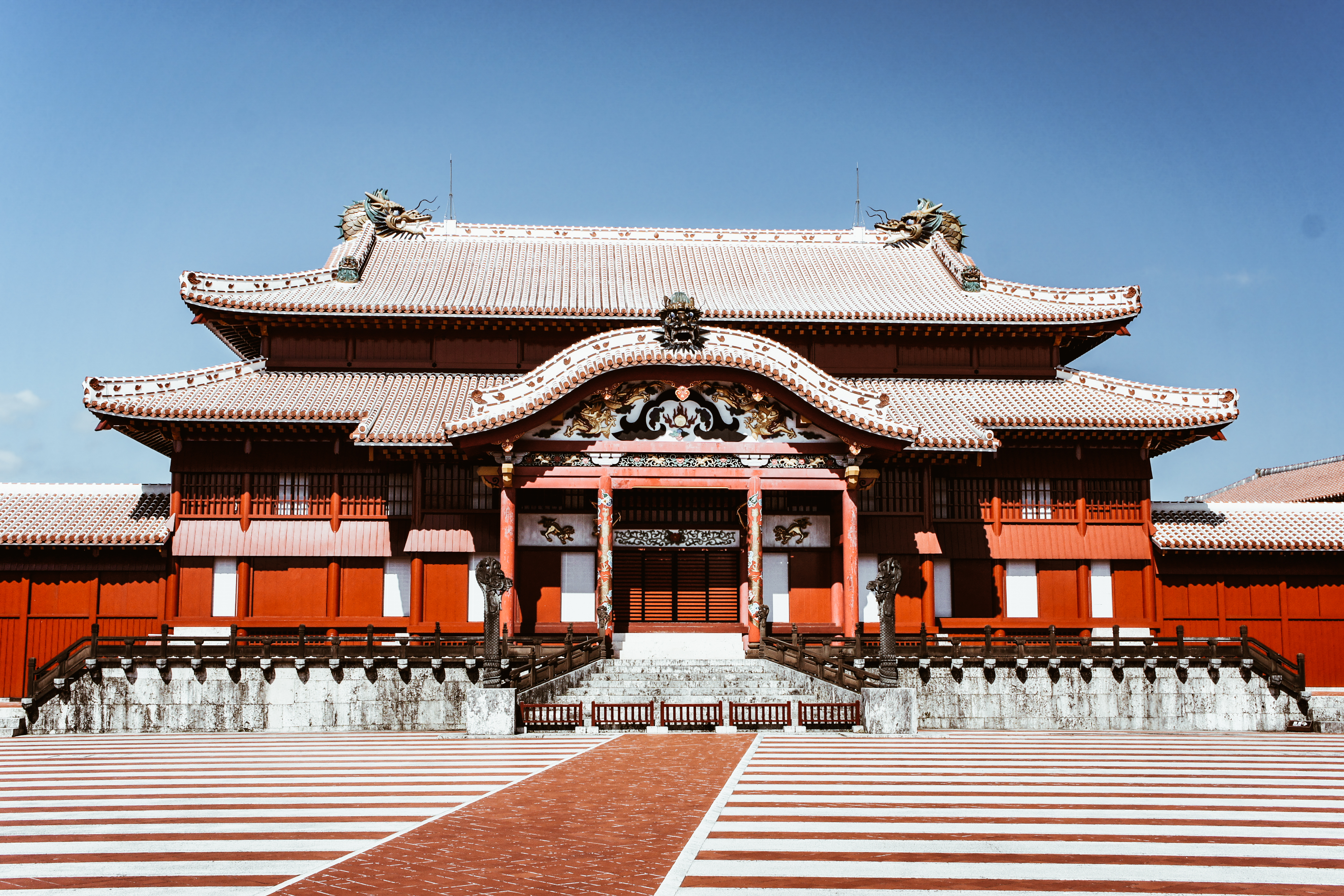
photo credits: wikipedia.org
Parco seminazionale di Okinawa Senseki
Luogo dove avvenne la celebre battaglia di Okinawa durante la Seconda guerra mondiale, il parco è dedicato alle circa 200.000 vittime degli scontri. Di particolare importanza sono il Museo memoriale della Pace con diversi pezzi che rimandano alla guerra. Ricordiamo infatti gli oggetti dei caduti, le loro foto durante la guerra di Okinawa e la Pietra angolare della Pace con tutti i nomi dei caduti. Il 23 giugno nel 1945 l'esercito giapponese ha smesso di opporre resistenza. Questo è il giorno in cui ogni anno si tiene la cerimonia di commemorazione per i caduti in guerra.
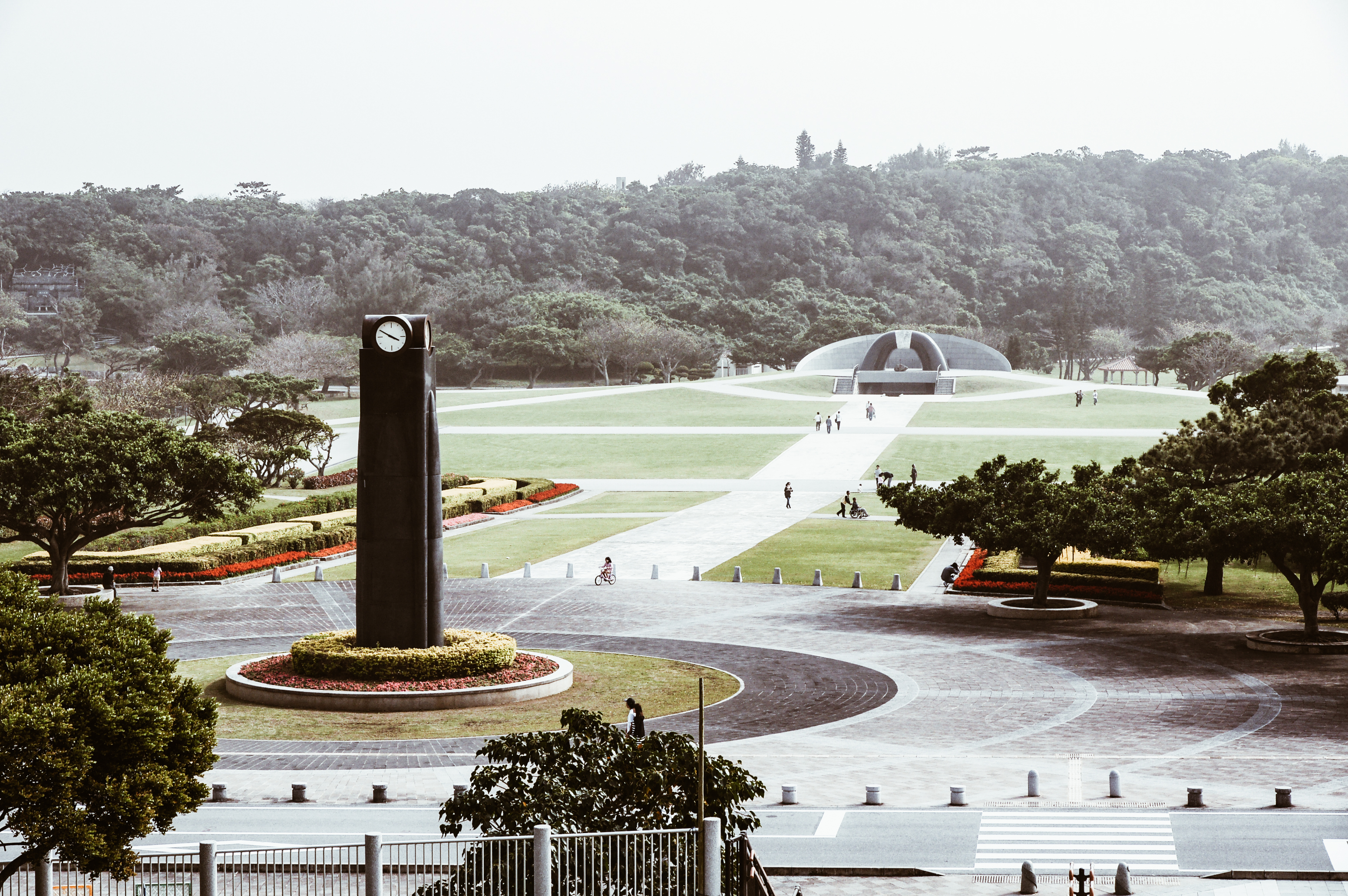
photo credits: wikipedia.org
Sefa Utaki
Sefa Utaki è un importante luogo sacro per la religione di Okinawa situato sull'Isola di Kudaka. Si trova su una collina con formazioni rocciose collegate tra loro da percorsi pedonali. La traduzione inglese della parola Sefa-utaki è "luogo purificato di Utaki". Anche questo sito fa parte del Patrimonio Mondiale UNESCO.

photo credits: japan-guide.com
Giardino Shikinaen
Il giardino Shikinaen è stato costruito alla fine del 18° secolo ed era la seconda residenza dei re di Ryukyu. Qui si possono trovare edifici in legno in stile okinawano, con tegole rosse e un laghetto centrale.

photo credits: giapponepertutti.it
Mausoleo Tamaudun
Il mausoleo Tamaudun è stato costruito intorno all’inizio del 16° secolo per la famiglia reale del Regno di Ryukyu. E’ stato restaurato dopo aver subito gravi danni durante la guerra ed ora è Patrimonio Mondiale dell’UNESCO.

photo credits: sobre-japon.com
Ocean Expo Park
L’Ocean Expo Park è un grande parco sulla punta della penisola di Motobu, nel nord di Okinawa Honto. Questa attrazione è stata costruita nel 1976 per commemorare l’Okinawa International Ocean Expo tenutosi l’anno precedente. L’attrazione principale del parco è il Churaumi Aquarium, definito l’acquario più bello del Giappone.
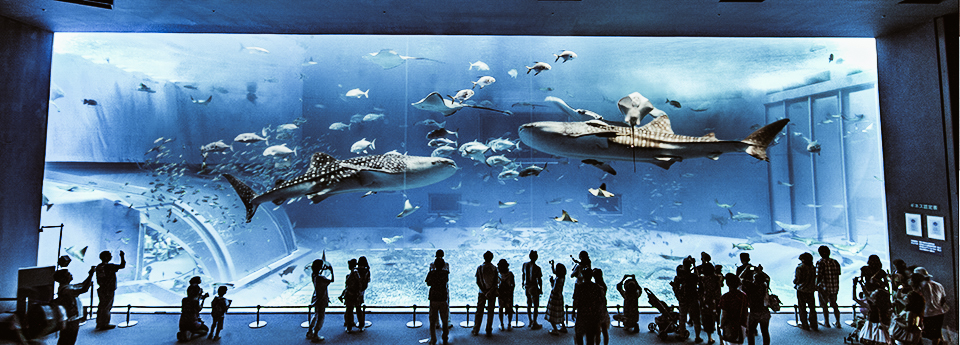
photo credits: worldsciencemuseums.altervista.org
Kokusai Dori
Kokusaidori (letteralmente “Strada Internazionale”) è la via principale che si estende per circa due chilometri attraverso il centro di Naha. La strada prende il nome dal precedente “Ernie Pyle International Theatre”, un cinema costruito lungo la strada dopo la guerra.

photo credits: japan-guide.com
Cascata Hiji
La cascata Hiji si trova a Yambaru Honto, nella zona nord di Okinawa. Qui la densità della popolazione è molto bassa e la maggior parte del territorio è coperto da foreste naturali. Si può accedere alla cascata tramite un’escursione lungo un sentiero attraverso la foresta. Tuttavia, Il sentiero è stato danneggiato da un tifone nel 2012 ma riaperto nel mese di aprile 2013.
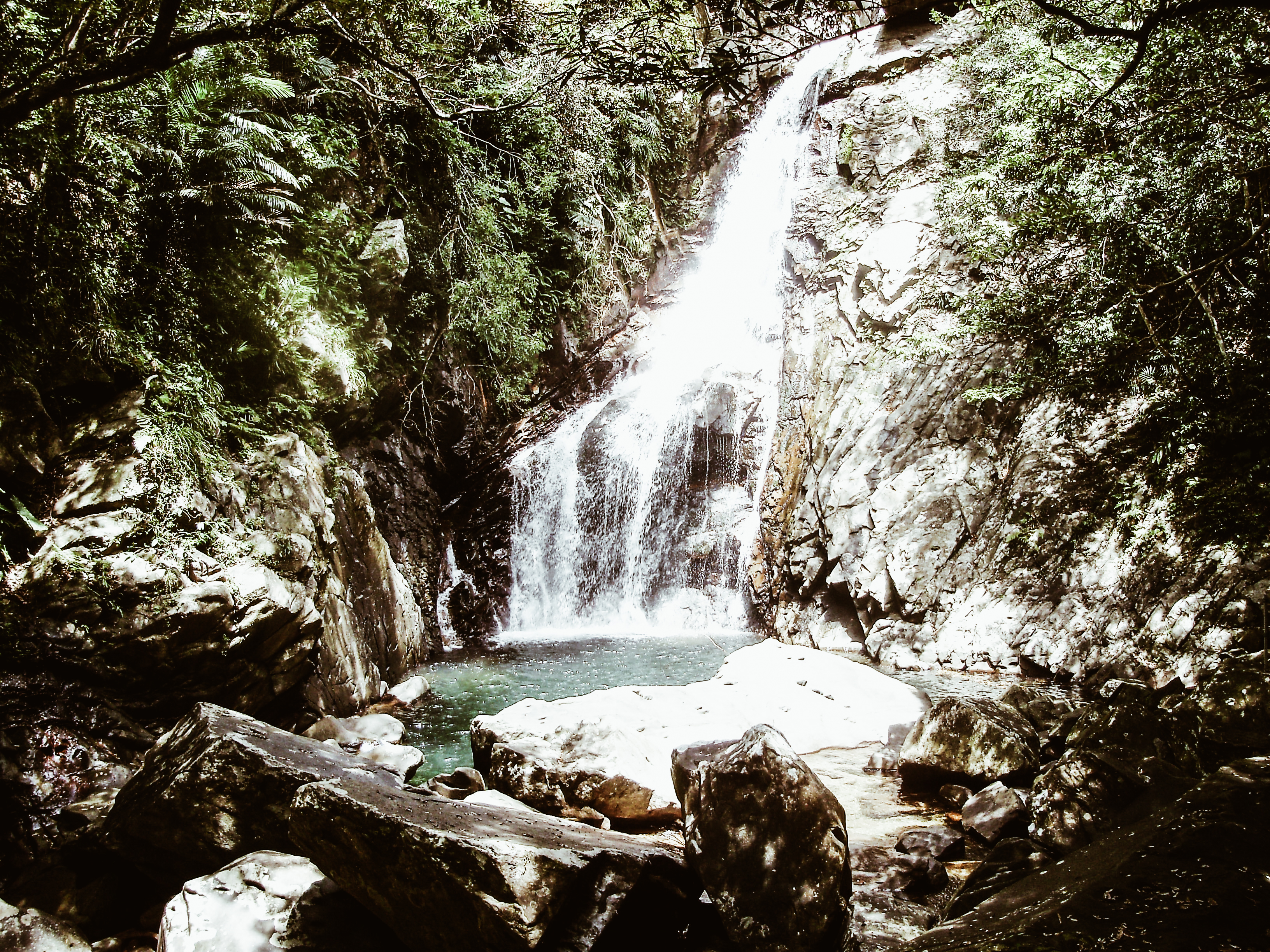
photo credits: ilgiappone.wordpress.com
Rovine dei Castelli Nakagusuku, Katsuren e Zakimi
Un’altra meta molto interessante, sono le rovine dei Castelli di Nakagusuku, Katsuren e Zakimi di cui queste ultime due sono patrimonio dell’UNESCO.
Il primo si erge a 150 metri sopra il livello del mare e fu originariamente costruito dal clan Aji nel XIV secolo. Successivamente, Gosamaru lo ampliò nel XV secolo prima di cadere definitivamente nelle mani di Awamari-san. Questo castello oggi è patrimonio dell’UMA.

photo credits: travel.sygic.com
Il castello di Katsuren invece fu di proprietà di Awamari-san. Nel XV secolo egli mise in seria difficoltà il potere reale a causa del proprio carattere ribelle e delle proprie conquiste militari.
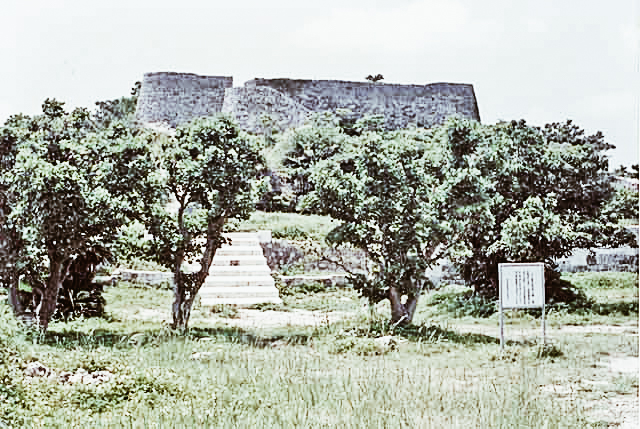
photo credits: it.depositphotos.com
Il castello di Zakimi invece fu costruito nel XV secolo dal leggendario guerriero Gosamaru. Noto per le sue costruzioni militari, questo castello è il primo esempio di portale in pietra esistente sull’isola di Okinawa.

photo credits: ilgiappone.wordpress.com
Mihama American Village
Il Mihama American Village è un grande complesso di intrattenimento situato nel centro di Okinawa Honto. Molte basi militari americane si trovano nella zona e il complesso di intrattenimento è un diversivo molto ricercato per la gente del posto. Il Mihama American Village ha molti negozi, ristoranti, caffè e un ampio parcheggio.

photo credits: en.japantravel.com
Okinawa World
Okinawa World è un parco dedicato alla cultura okinawana. Le attrazioni principali del parco sono una grande grotta naturale (Gyokusendo), un villaggio artigianale e un museo di serpenti.

photo credits: city-cost.com
Passiamo alla natura, perchè è vero che Okinawa è tradizione e storia, ma è anche un Paradiso naturale da vivere. Ci sono molte spiagge da sogno in cui trascorrere momenti indimenticabili, ma per voi abbiamo scelto le migliori. Diteci poi cosa ne pensate della nostra selezione!
Le spiagge di Okinawa: Manza Beach
La spiaggia dalla sabbia soffice fa parte del ANA InterContinental Manza Beach Resort, il cui edificio si affaccia sui 300 metri della spiaggia.

photo credits: okinawatravelinfo.com
Le spiagge di Okinawa: Moon Beach
Moon Beach è una spiaggia situata all’interno dei terreni di Hotel Moon Beach. La spiaggia si estende per 150 metri ed è spesso molto affollata. C’è una zona riservata ai nuotatori, ombrelloni e reti da pallavolo.
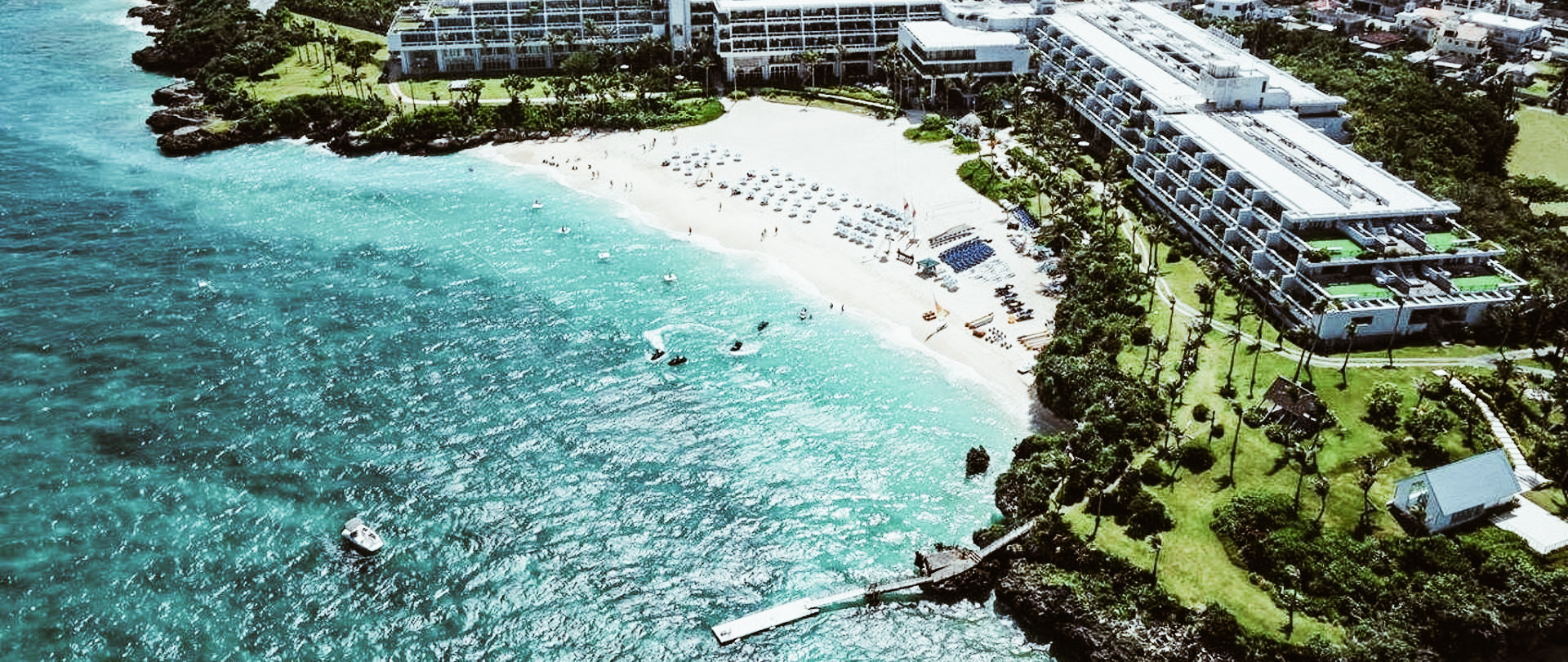
photo credits: hotelmoonbeach.moonhotelsandresorts.com
Le spiagge di Okinawa: Sunset Beach
Avete voglia di godervi tramonti da film? E allora non potete perdervi la Sunset Beach. Si trova proprio accanto al Mihama American Village. La spiaggia è lunga circa 250 metri ed è situata in una piccola baia artificiale sulla sponda occidentale.
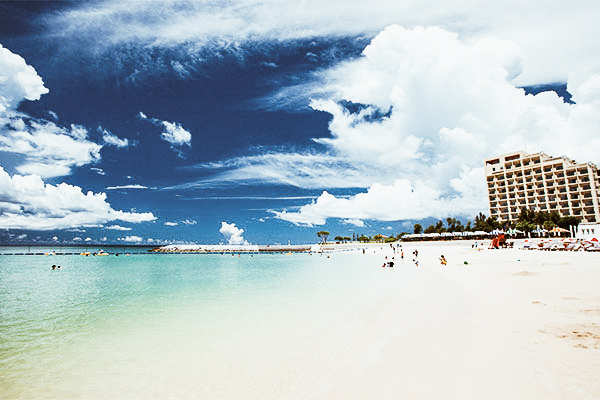
photo credits: oki-islandguide.com
Le spiagge di Okinawa: Emerald Beach
Emerald Beach si trova all’interno dell’Ocean Expo Park sulla penisola di Motobu. La spiaggia è divisa in tre settori e ciascuna delle tre aree è lunga circa 150 metri.

photo credits: okinawatravelinfo.com
Le spiagge di Okinawa: Okuma Beach
Okuma Beach è una spiaggia situata all’interno della JAL Private Resort Okuma. Si trova nel nord di Okinawa Honto, la zona meno densamente popolate. La spiaggia si estende per oltre un chilometro lungo la costa.
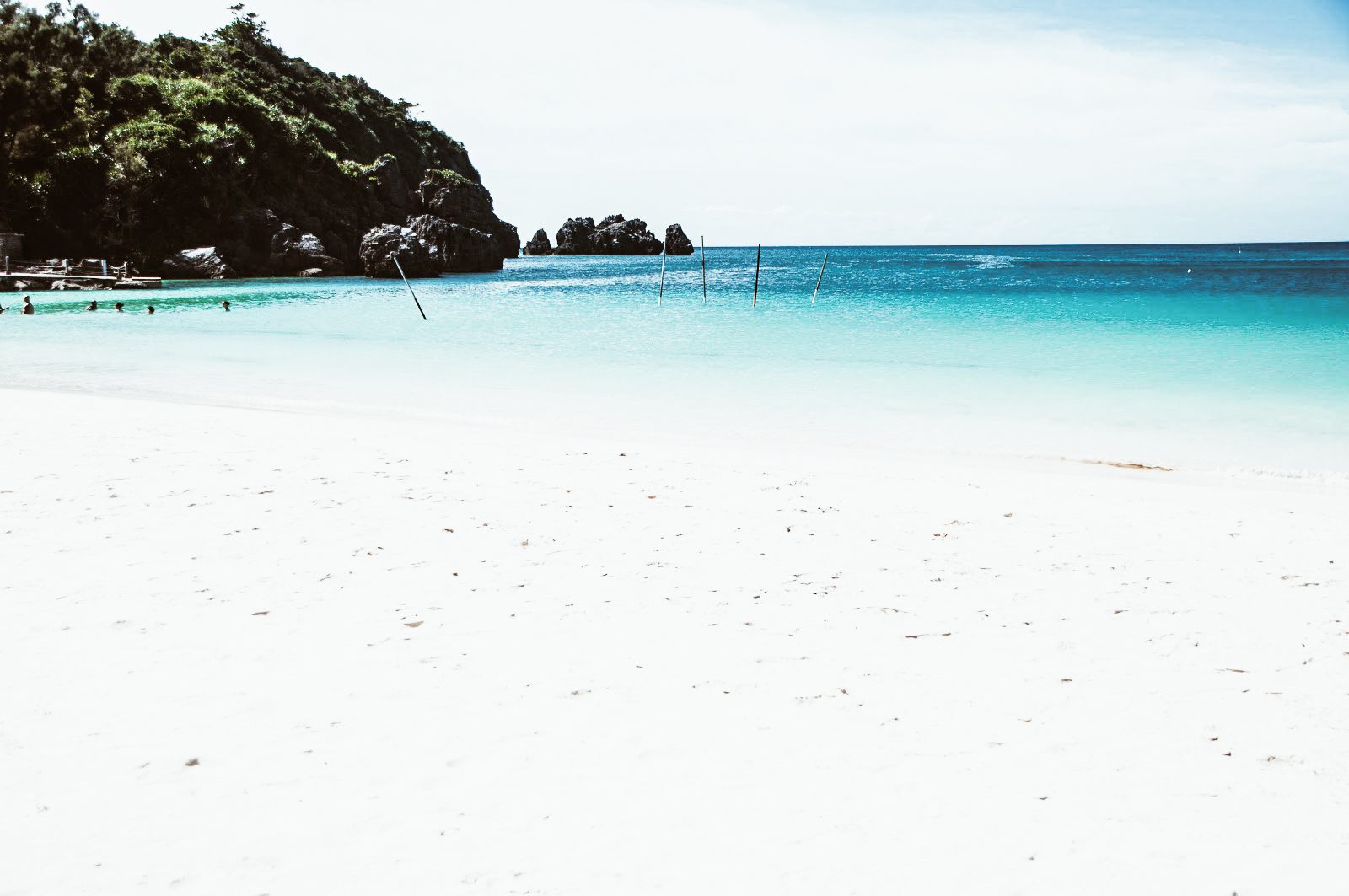
photo credits: marshallsabroad.com
Se proprio non potete ancora partire, vogliamo consigliarvi un film per godere delle bellezze di Okinawa: Karanukan (カーラヌカン). Romantico ma con lo scopo di mostrare le bellezze di questo paese, il film racconta la storia del fotografo Hikaru Ooyama (GACKT) che decide di visitare Okinawa. Lì, incontra Mami Ishigaki (Suzuka Kimura) e ne rimane affascinato, tanto da sceglierla come modella. Durante un servizio fotografico nelle Yaeyama Islands, Hikaru viene investito da un fascio di luce che gli fa perdere momentaneamente coscienza e traccia della sua musa. La sua vita, da quel momento in poi, è dedicata alla ricerca di Mami tra gli incredibili posti da sogno di Okinawa. Se avete voglia di pregustare questi magnifici luogi, Karanukan è il film giusto per voi.
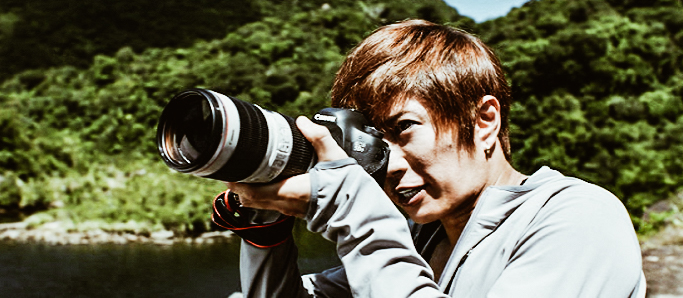
photo credits: gacktitalia.com
Solitamente scrivo solo articoli per me di un certo interesse, ormai sapete che mi occupo della storia Giapponese, dei Samurai e di aziende Giapponesi in Italia. Di viaggi mi occupo raramente, tuttavia questa volta la passione ha parlato al posto mio.
Appena ne avete la possibilità, partite per questa meravigliosa isola. Scoprirete che tutti i posti di cui avete sempre sentito parlare, tutte le spiagge, tutti i luoghi che avete sempre sognato si riuniscono tutti qui, ad Okinawa.
Japan History: Sakamoto Ryōma
Sakamoto Ryōma (Gennaio 3, 1836 – Dicembre 10, 1867) è ancora riconosciuto come una delle figure più importanti dello Shogunato di Tokugawa ed uno dei più grandi eroi del periodo Edo.
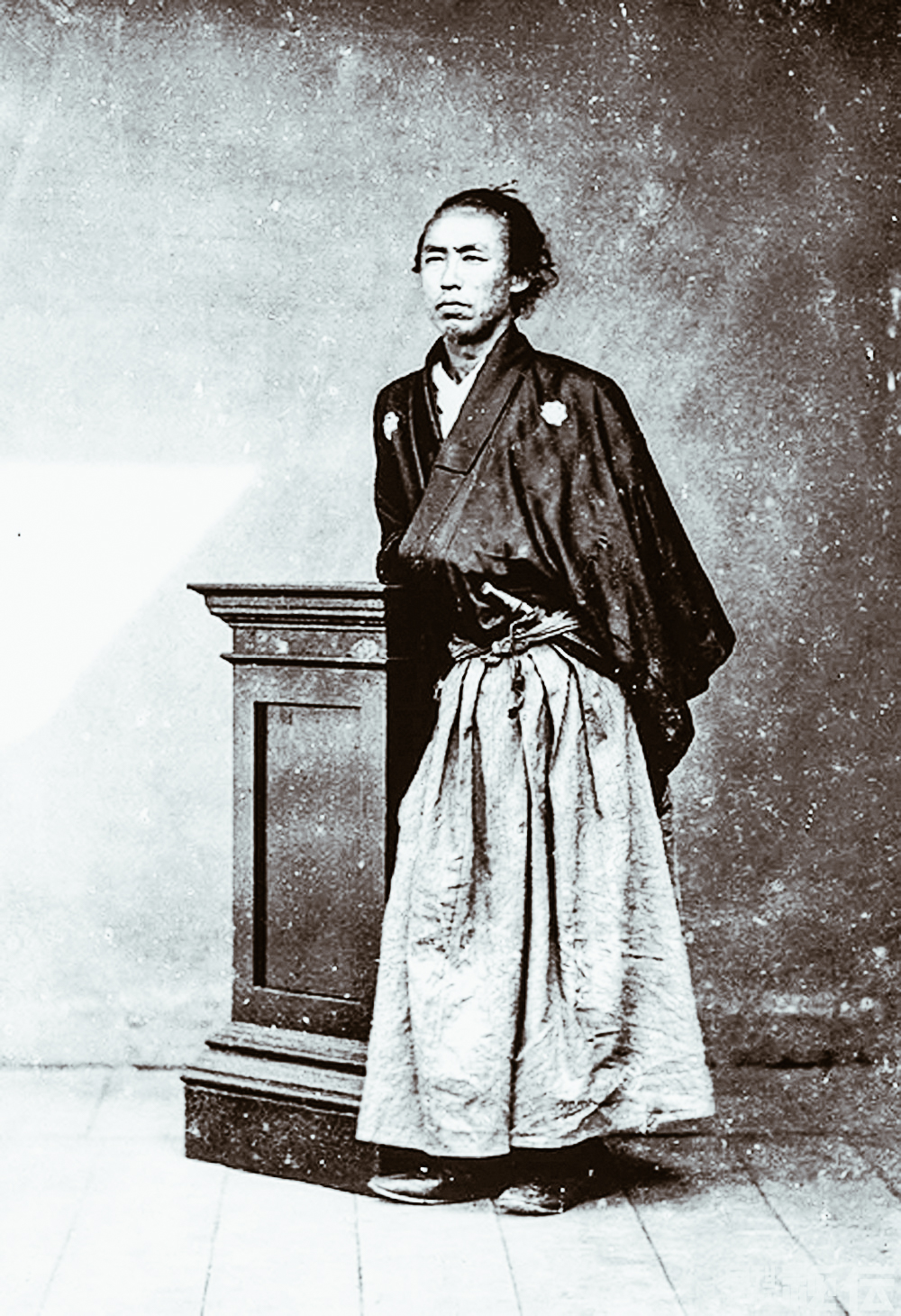
photo credits: budojapan.com
Prima gioventù
Nacque nell’isola di Shikoku, nella Tosa Han (oggi prefettura di Kōchi) il quindicesimo giorno dell’undicesimo mese del sesto anno di Tenpō secondo il calendario giapponese. La sua famiglia era famosa per essere una grande produttrice di sake, ottenendo così il rango più basso della categoria dei Samurai, il Gōshi (Samurai della campagna). Tosa aveva una separazione molto netta tra Joshi (samurai di alto rango) e Kashi (samurai di basso rango). Anche nella generazione di Sakamoto Ryōma, il grado samurai della sua famiglia rimaneva Kashi. All'età di dodici anni, Ryōma fu iscritto in una scuola privata, ma non durò molto, perché la sua inclinazione allo studio non era molto forte.
Grazie alla sua sorella maggiore, si è poi iscritto alle classi di scherma di Oguri-ryū quando aveva 14 anni, dopo essere stato vittima di bullismo a scuola. Nell’età adulta era a tutti gli effetti un maestro spadaccino. Nel 1853 gli fu concesso dal suo clan di recarsi a Edo per migliorare le sue abilità come spadaccino. Lì si iscrisse come studente al Hokushin Ittō-ryū Hyōhō Chiba-Dōjō, in cui ricevette il diploma dalla scuola che dichiarava la sua maestria. Divenne poi shihan al Chiba-Dōjō e insegnò il Kenjutsu agli studenti insieme a Chiba Jūtarō Kazutane, suo caro amico. Nel 1858 tornò a Kochi. Tuttavia, quattro anni più tardi il Commodoro Perry degli Stati Uniti arrivò con una flotta di navi per costringere il Giappone a uscire dalla sua secolare politica di isolamento nazionale. Nello stesso anno cominciarono a formarsi movimenti contro gli stranieri, movimenti anti Tokugawa e a supporto dell’Imperatore.
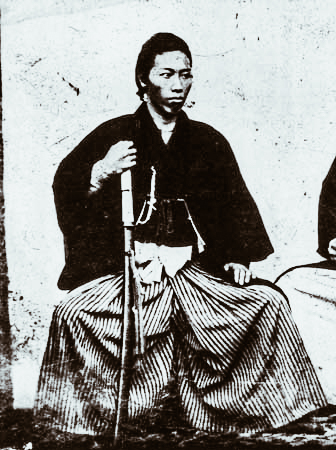
photo credits: jref.com
Sakamoto Ryōma e Takechi Hanpeita
Il suo amico, Takechi Hanpeita (o Takechi Zuizan), organizzò il Partito Lealista di Tosa "Kinnoto". Il loro slogan politico era "Riverisci l'imperatore, espelli i barbari". Il gruppo consisteva in circa 2000 samurai, per lo più di rango inferiore, che insistevano sulla riforma del governo di Tosa. Siccome il gruppo non fu riconosciuto, cominciarono un complotto per assassinare Yoshida Toyo, capo del dominio Tosa. Ryōma ha partecipato al complotto senza però sostenerlo realmente.
Takechi chiese una rivoluzione solo per il clan di Tosa, e Ryōma pensò che avrebbero invece dovuto fare qualcosa per tutto il Giappone. Decise di lasciare Tosa e di separarsi da Takechi. A quei tempi, a nessuno era permesso di lasciare il proprio clan senza permesso, pena la morte. Una delle sorelle di Ryōma si suicidò proprio a causa del comportamenti del fratello.
Nel 1864, quando lo shogunato Tokugawa iniziò a prendere una linea dura, Ryōma fuggì a Kagoshima nel Dominio di Satsuma, in sviluppo come centro principale per il movimento anti-Tokugawa. Ryōma ha negoziato l'alleanza segreta tra le province di Chōshū e Satsuma. Satsuma e Chōshū erano storicamente nemici inconciliabili, e la posizione di Ryōma fu vista come "outsider neutrale".
Sakamoto Ryōma e l’occidente
Ryōma era un ammiratore dei principi democratici e studiò molto il Congresso degli Stati Uniti e il Parlamento britannico. Amava a tal punto questi concetti che li prese come modello per il governo del Giappone dopo la Restaurazione.
Ryōma ha scritto le "Otto proposte durante la spedizione" mentre discuteva del futuro modello del governo giapponese con Gotō Shōjirō a bordo di una nave Tosa fuori Nagasaki nel 1867. Ryōma ha sottolineato la necessità di una legislatura bicamerale eletta democraticamente e la stesura di una Costituzione. Inoltre, aveva considerato la formazione di un esercito e di una flotta nazionali assieme alla regolamentazione dei tassi di cambio dell'oro e dell'argento. Si pensa che le proposte di Ryōma costituiscano la base per il successivo sistema parlamentare attuato dopo la sua morte.
Sakamoto Ryōma e il Periodo Bakumatsu
Ryōma spinse per una riforma nazionale e lasciò il dominio, prendendo di mira Katsu Kaishu, un alto funzionario di Tokugawa.
Quando finalmente riuscì a trovarsi davanti il suo obiettivo, quest’ultimo chiese con calma di essere ascoltato prima di essere ucciso. Katsu Kaishu ha poi spiegato i suoi piani per aumentare la forza militare del Giappone attraverso la modernizzazione e l'occidentalizzazione. Invece di ucciderlo come erano i piani, Ryoma divenne il suo assistente. Insieme crearono una forza navale da non sottovalutare.
Ryōma è spesso considerato il "padre della Marina Imperiale Giapponese", perchè sotto la direzione di Katsu Kaishū lavorò per creare una moderna forza navale. Tutto questo per consentire a Satsuma e Chōshū di reggere il confronto con le forze navali dello shogunato Tokugawa. Ryōma fondò la marina privata e la società commerciale Kameyama Shachū nella città di Nagasaki con l'aiuto di Satsuma.

photo credits: visitkochijapan.com
La successiva vittoria di Chōshū sull'esercito Tokugawa nel 1866 e l'imminente crollo dello shogunato Tokugawa fecero di Ryōma una figura preziosa per i suoi ex padroni a Tosa. Infatti, è proprio in questo periodo che fu richiamato a Kōchi con molti onori. Il dominio di Tosa era ansioso di ottenere un accordo negoziato tra lo Shogun e l'Imperatore. Questo avrebbe impedito alla potente Alleanza di Satchō di rovesciare Tokugawa con la forza e quindi emergere come una nuova forza dominante nel governo del Giappone. Ryōma giocò di nuovo un ruolo cruciale nei negoziati che portarono alle dimissioni volontarie dello Shogun Tokugawa Yoshinobu nel 1867. Con l’arrivao così della Restaurazione Meiji, grazie a Sakamoto Ryoma lo Shogunato cadde. Fu così che il Giappone riuscì ad uscire dai 260 anni della Regola Tokugawa.
Ryōma usava spesso l'alias Saitani Umetarō (才谷梅太郎) poiché veniva spesso cacciato dai sostenitori di Bakufu, come i membri dello Shinsengumi.
L’assassinio di Sakamoto Ryōma
La notte del 10 dicembre 1867, Sakamoto Ryōma e il suo amico Nakaoka Shintaro soggiornarono all'Omiya Inn di Kyoto. Un gruppo di assassini si era radunato fuori dalla locanda. Quando uno di loro bussò alla porta uccidendo la guardia del corpo di Ryōma, il resto del gruppo raggiunse la sua stanza assassinando sia lui che Nakaoka.
Gli assassini non furono mai identificati. Tuttavia, i membri dello Shinsengumi e il loro capo Kondo Isami furono accusati e giustiziati per l’omicidio. Nonostante i Mimawarigumi, membri del gruppo pro-Tokugawa, abbiano confessato l'omicidio nel 1870, nessuna azione è mai stata presa contro di loro.
Lo scopo finale di Sakamoto Ryōma non era personale, ma per il bene del Giappone. Le sue azioni e le sue convinzioni lo hanno reso un eroe nazionale fino ad oggi.
Ryōma era un visionario che sognava un Giappone indipendente senza trappole feudali. Si ispirò all'esempio degli Stati Uniti dove "tutti gli uomini sono creati uguali". Si rese conto che per competere con un mondo esterno industrialmente e tecnologicamente avanzato, i giapponesi dovevano modernizzarsi. È stato anche visto come un intrigante mix di tradizione e modernità. Infatti, simbolo di questi tratti era la sua preferenza per il vestito da samurai con le calzature occidentali.
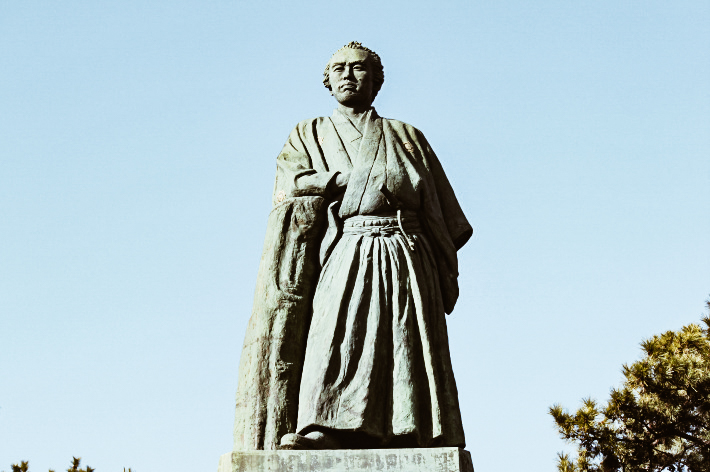
photo credits: tokyo2020.jp
I tempi moderni
Il 15 novembre 2003, l'aeroporto Kōchi è stato ribattezzato Kōchi Ryōma Airport in suo onore.
C'è un Sakamoto Ryōma Memorial Museum (坂本龍馬記念館) a sud di Kōchi, con una grande statua in bronzo di Ryoma che si affaccia sul mare. La città di Kōchi ha un certo numero di attrazioni e luoghi a tema Ryōma, tra cui il Sakamoto Ryōma Birthplace Memorial. Inoltre, il Sakomoto Ryōma Hometown Museum mostra il centro di Kōchi durante l'infanzia di Ryōma, compresi gli aspetti rilevanti che possono aver influenzato le sue opinioni. Il 15 novembre 2009 ad Hakodate, Hokkaido, è stato costruito il museo commemorativo Hokkaido Sakamoto Ryōma.








